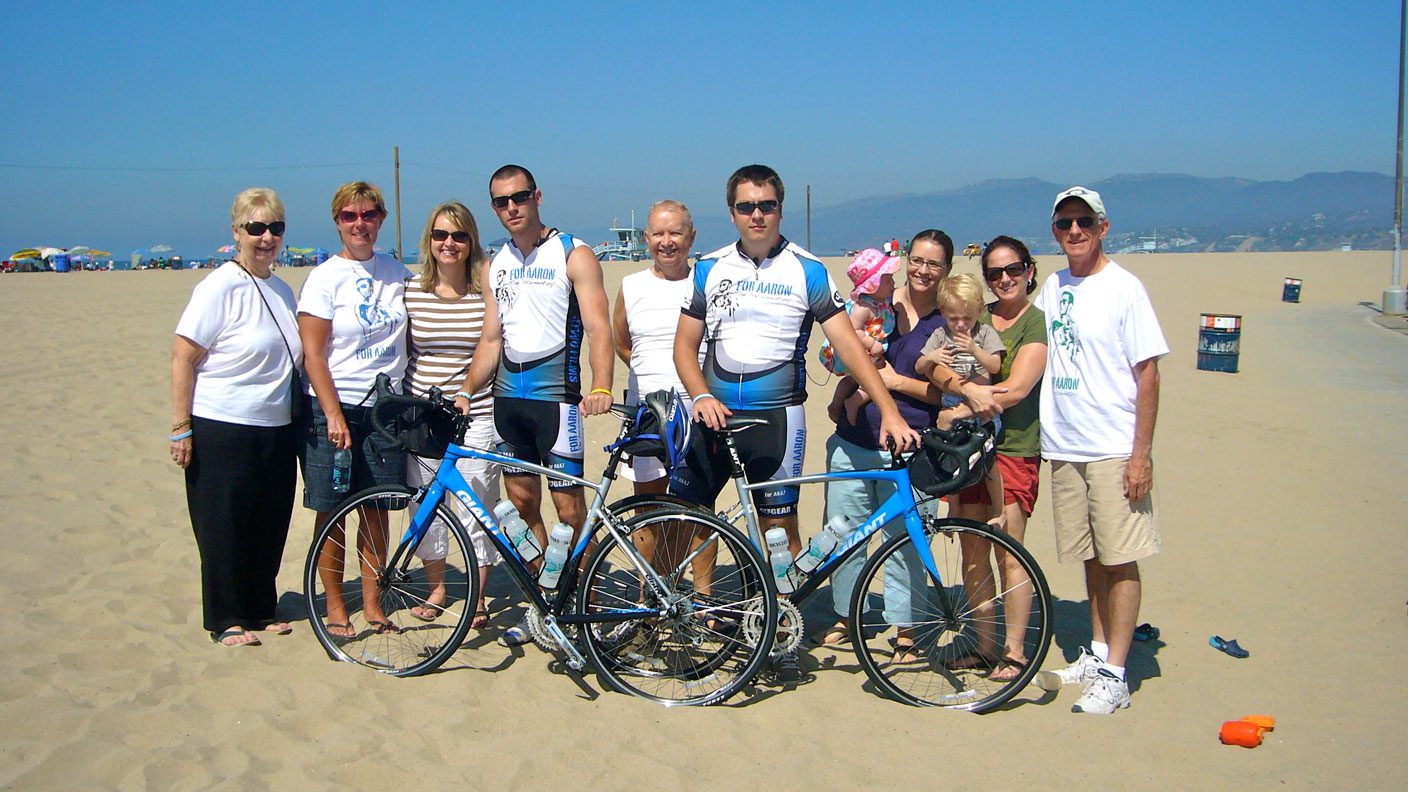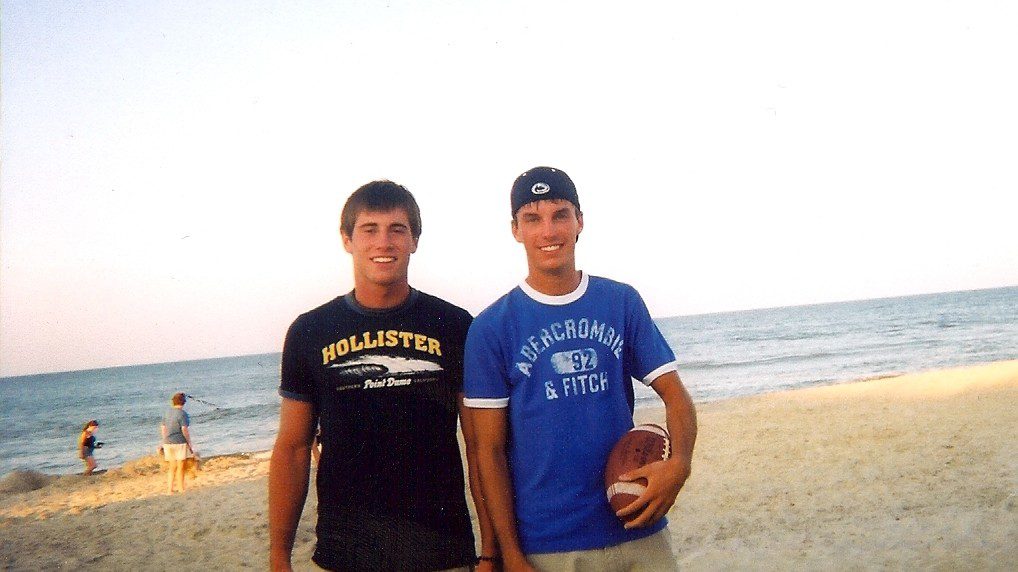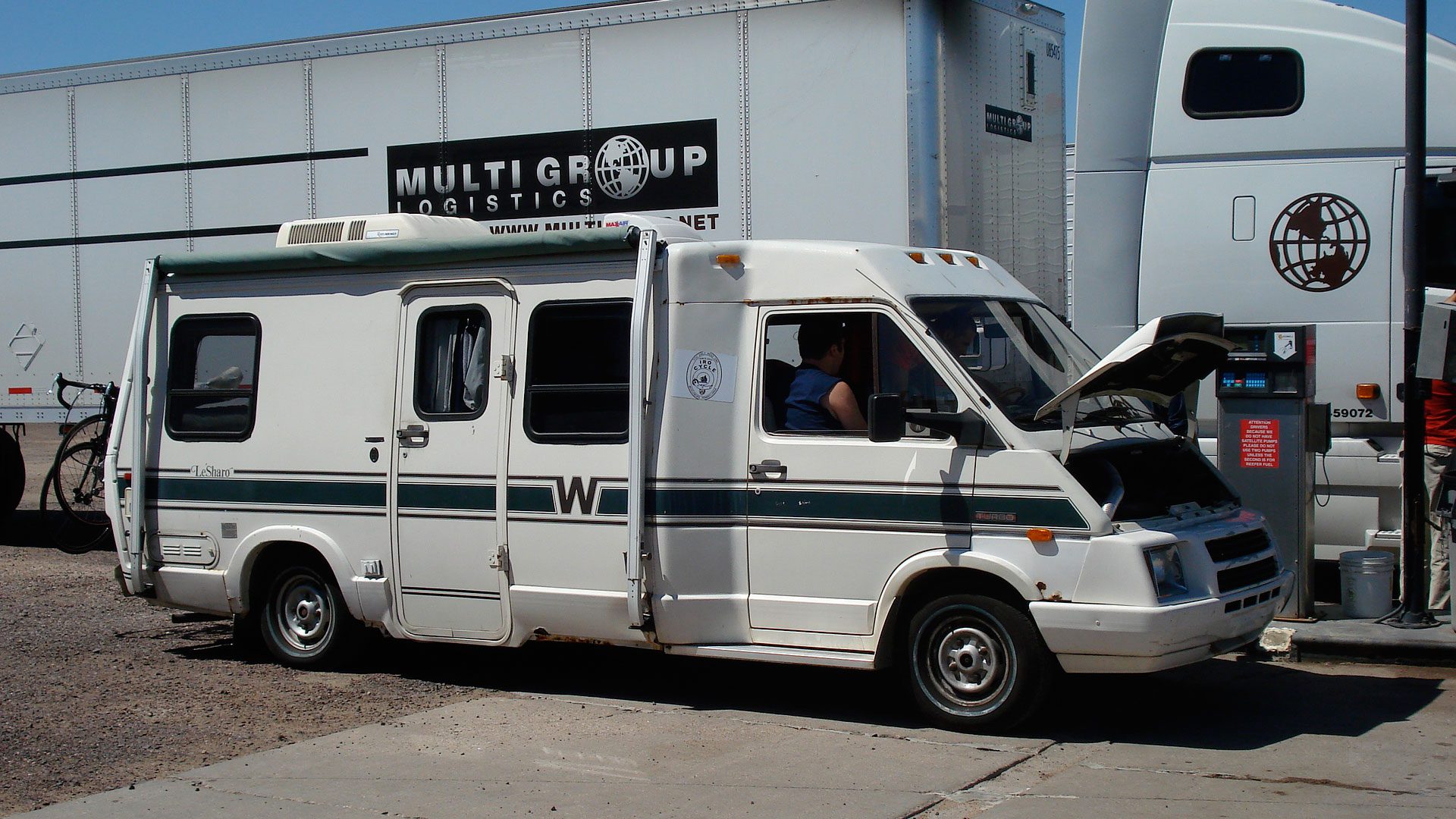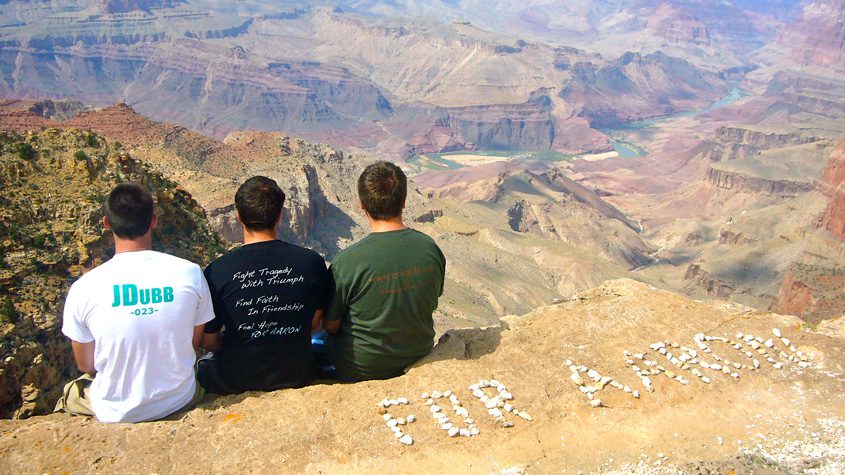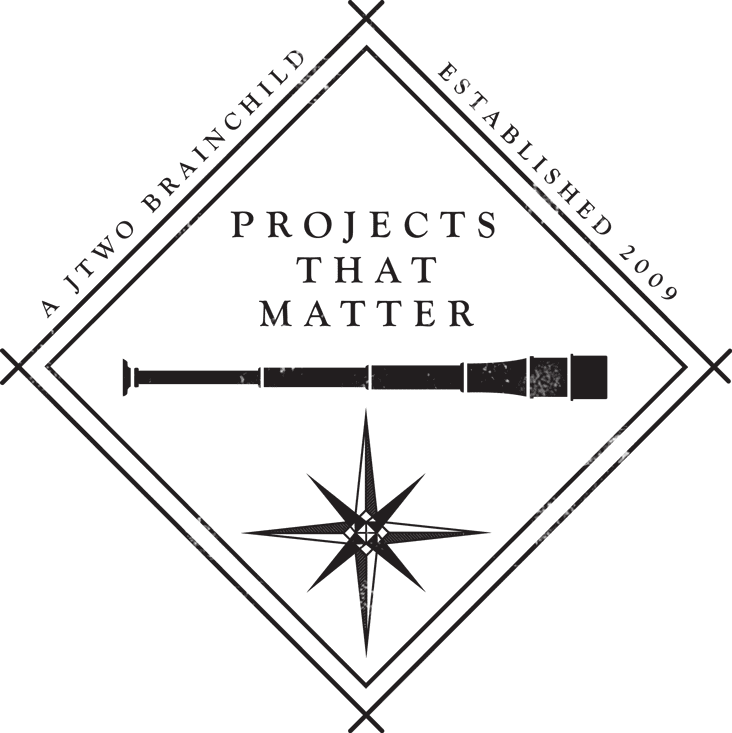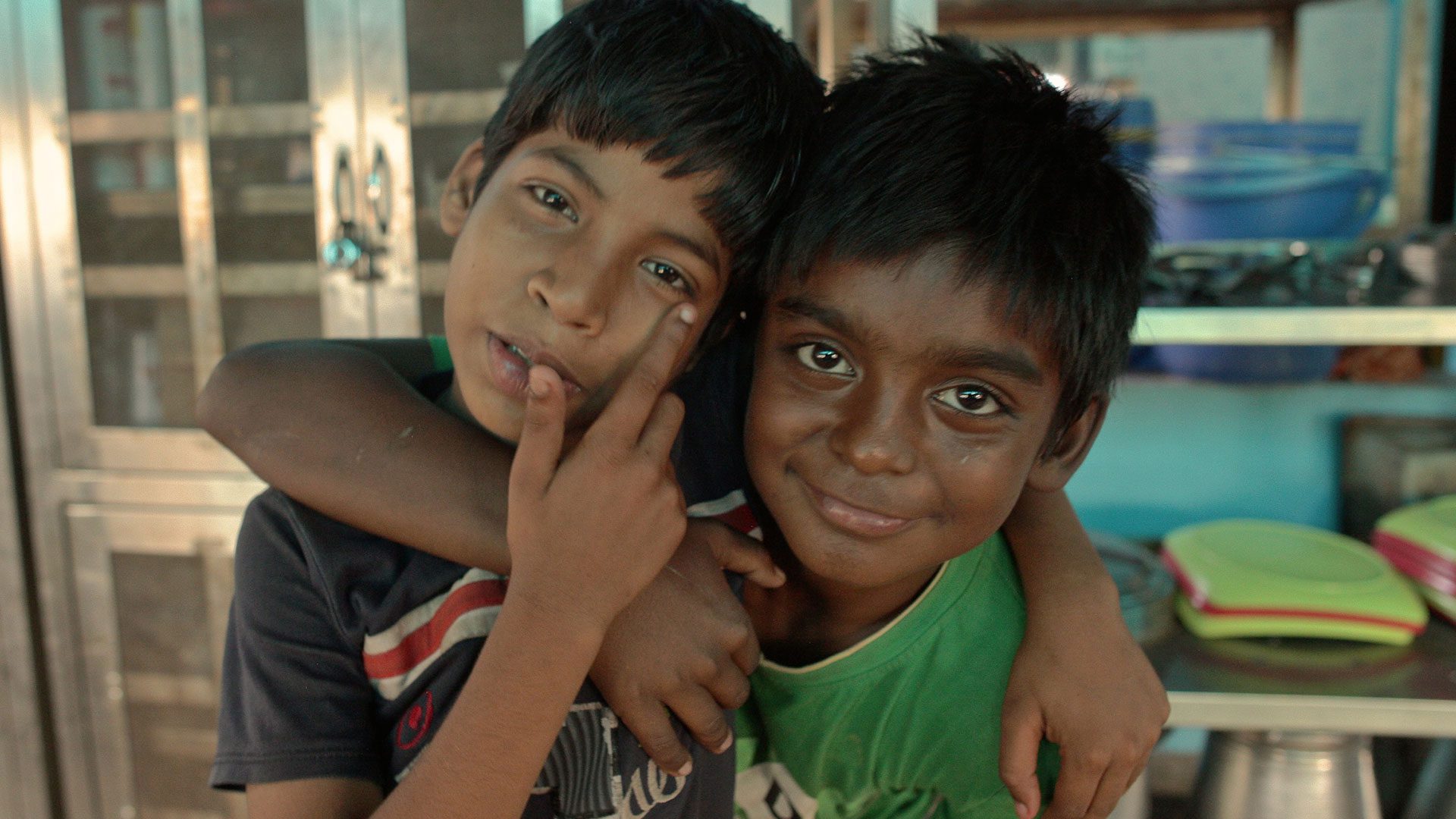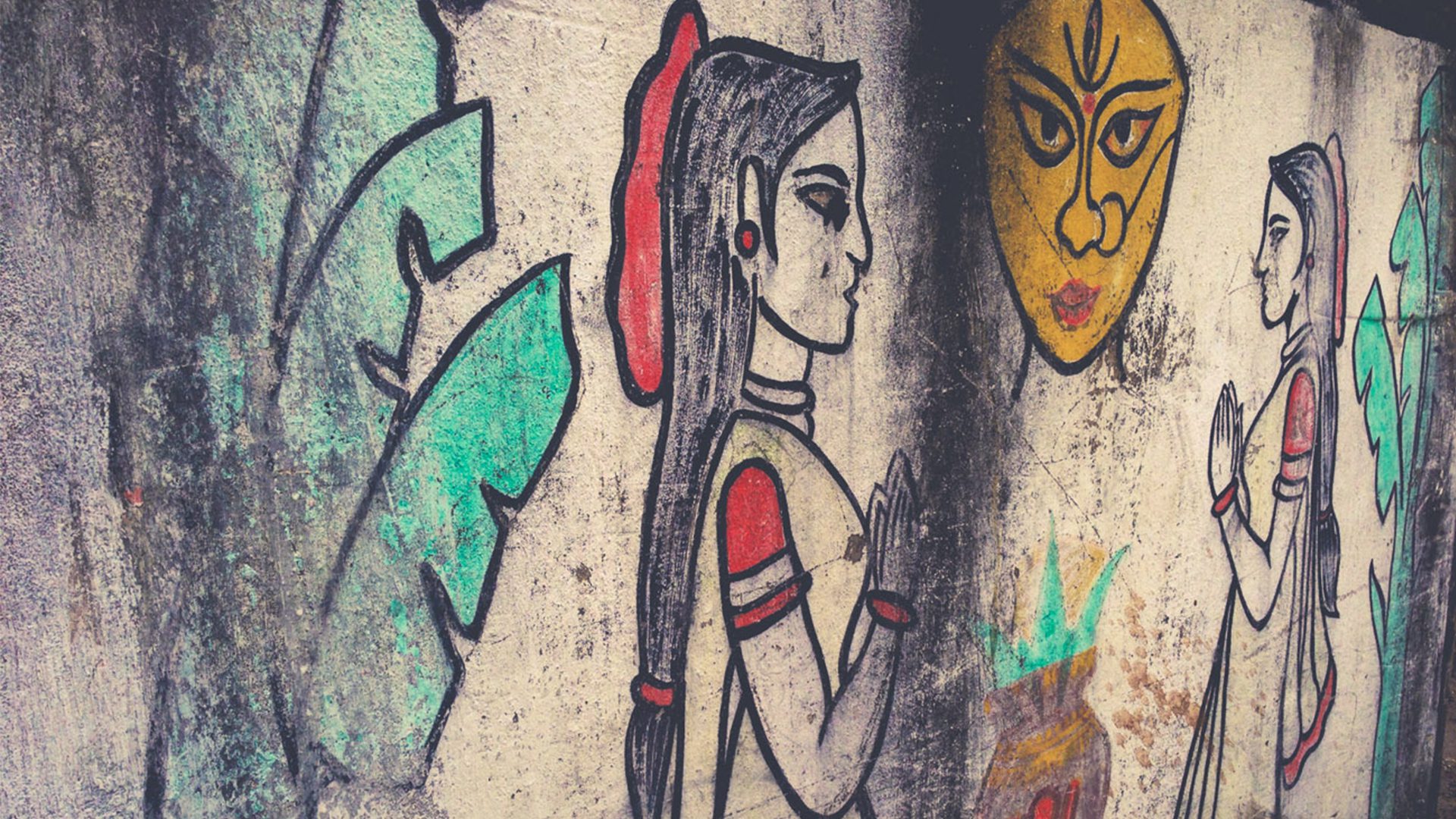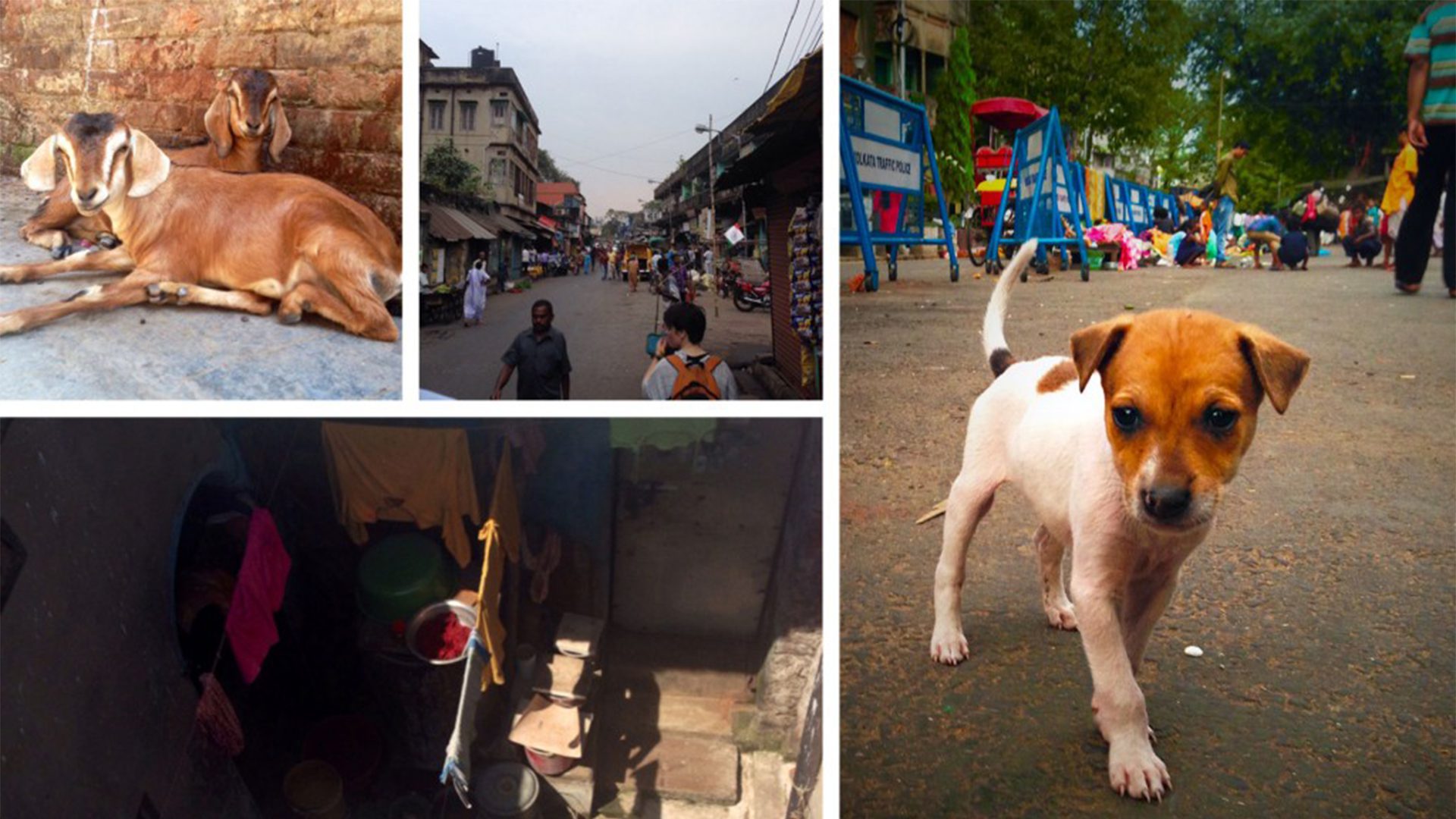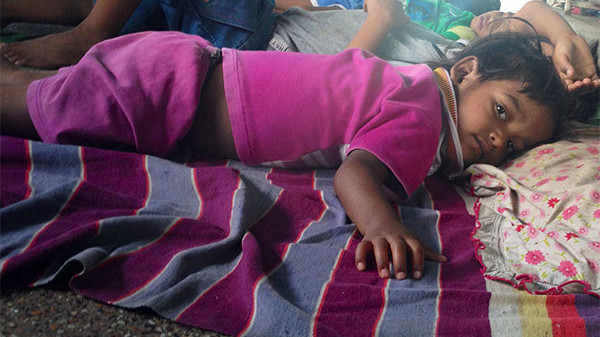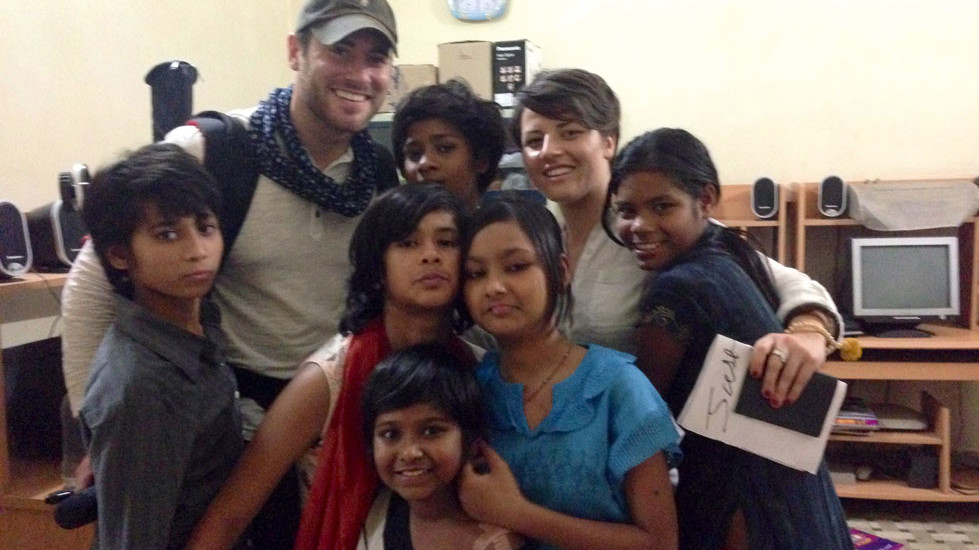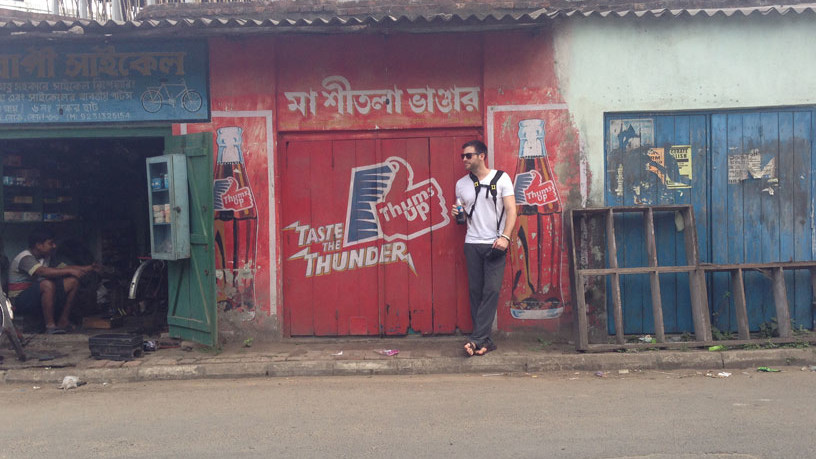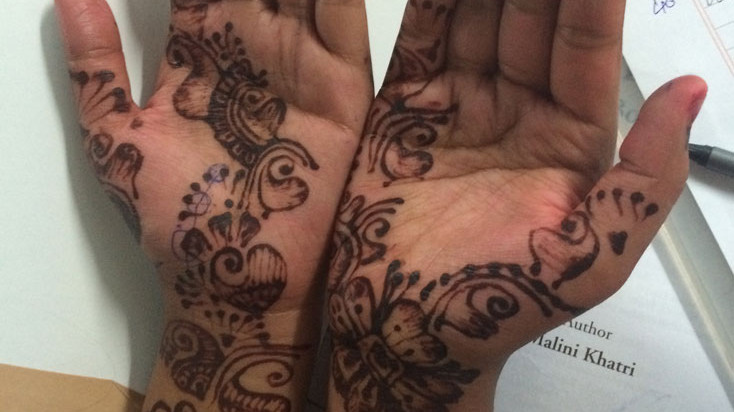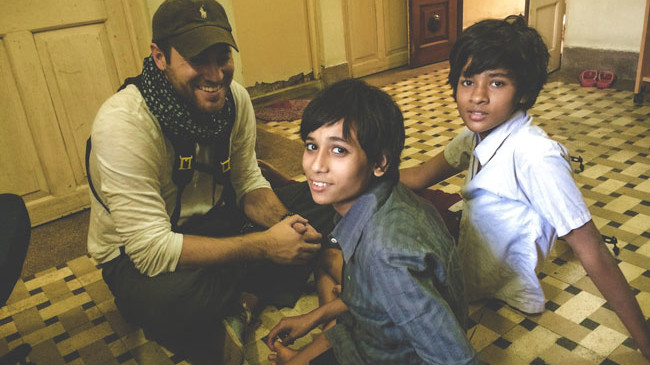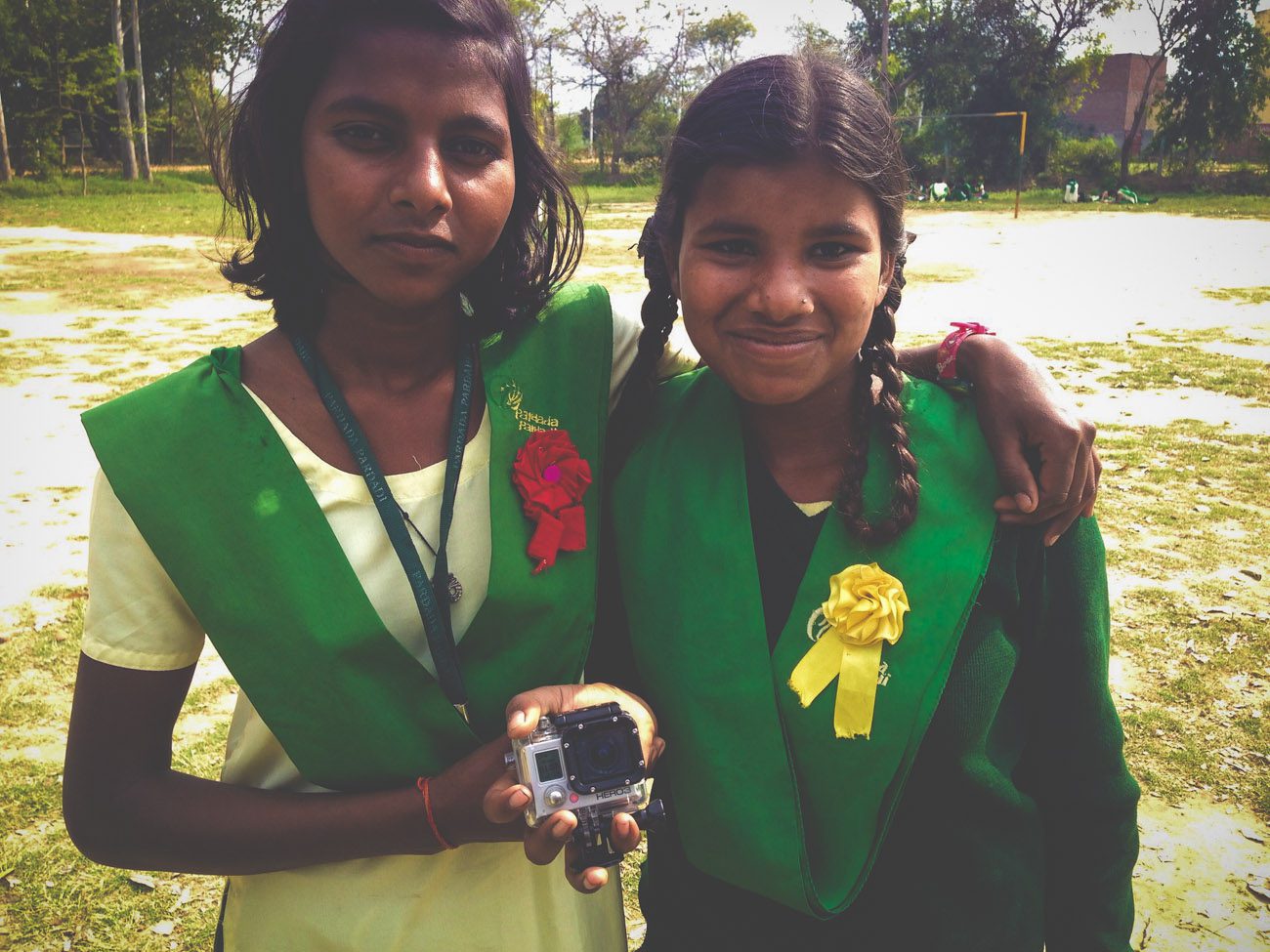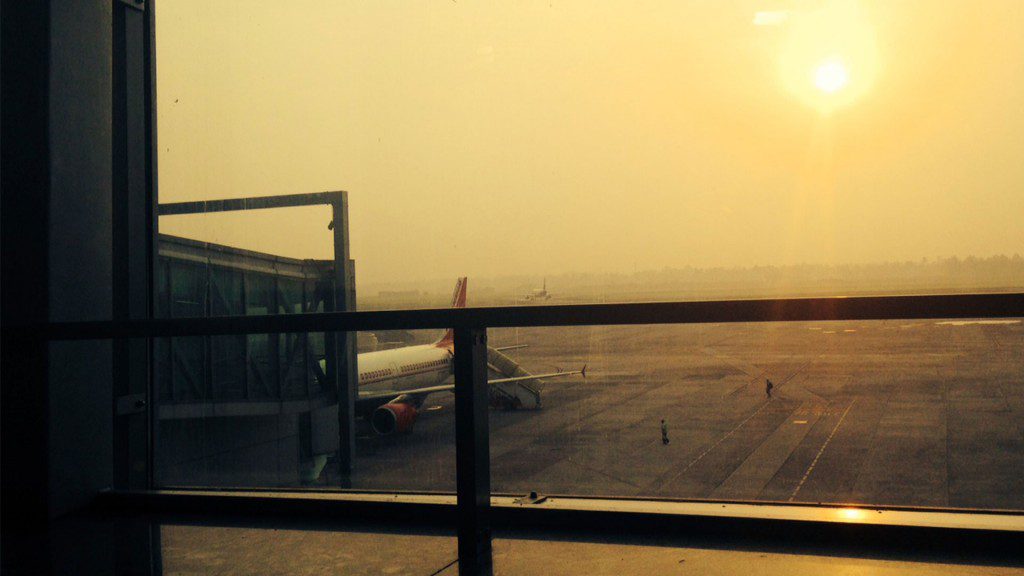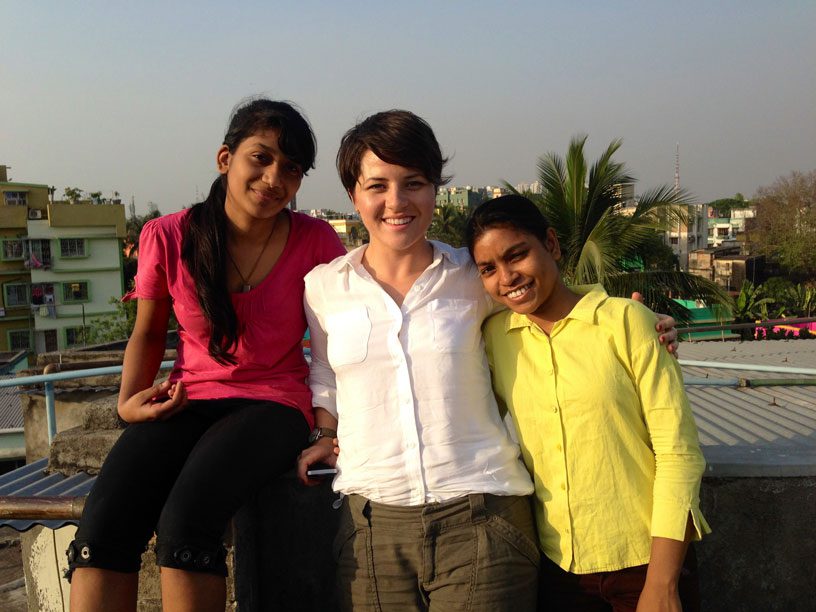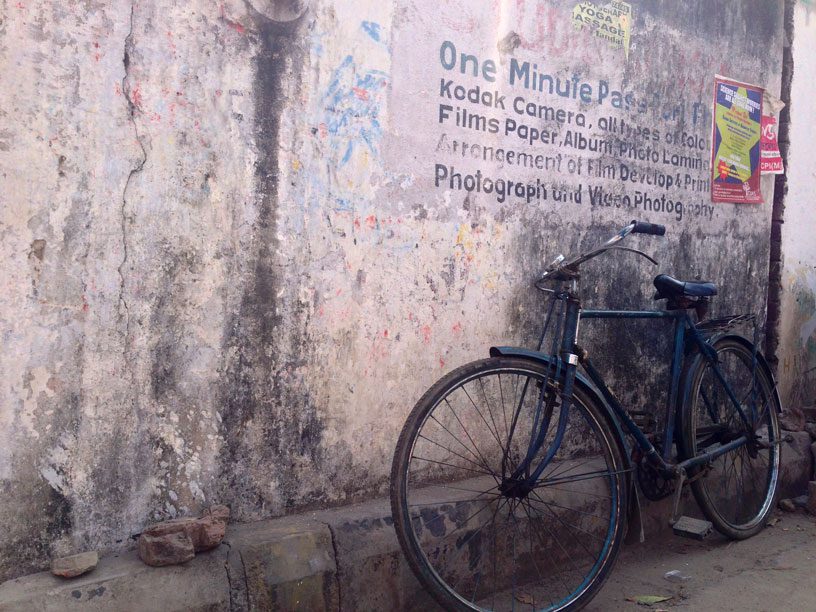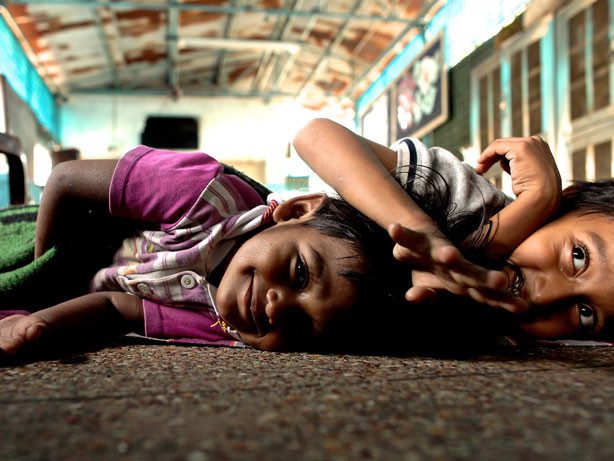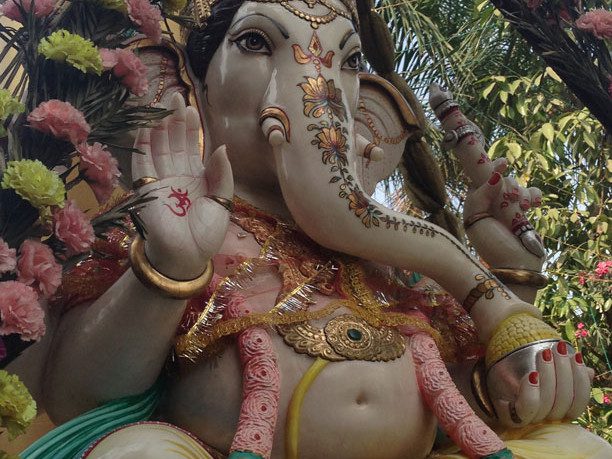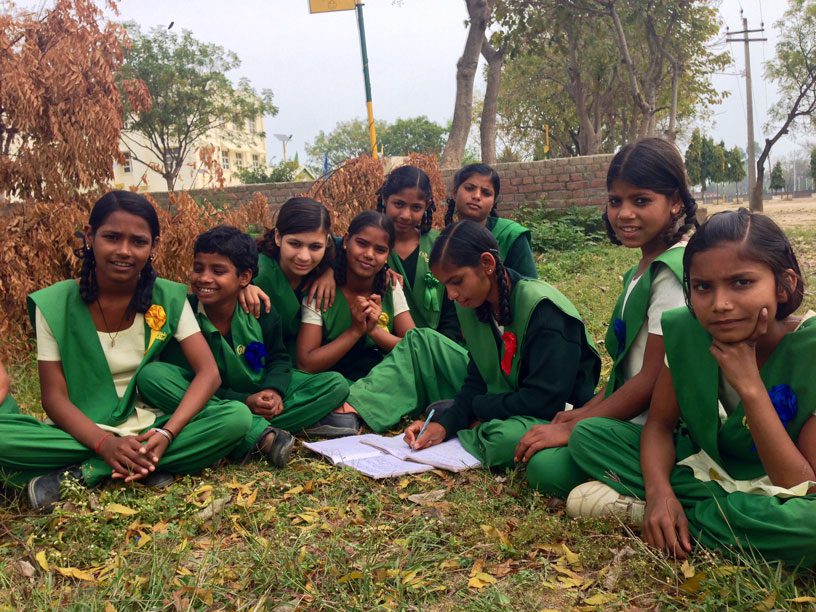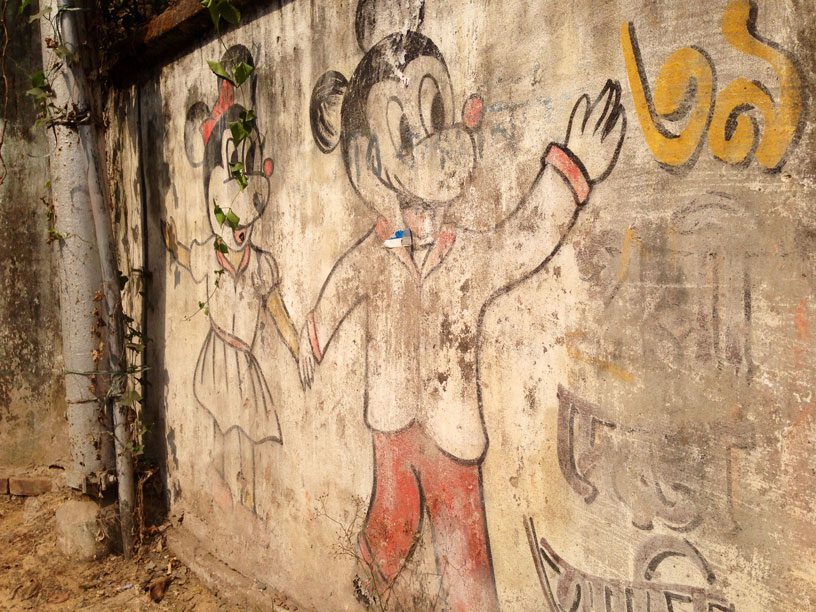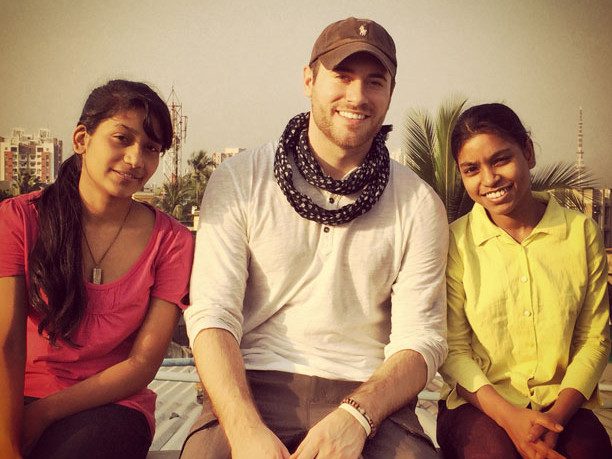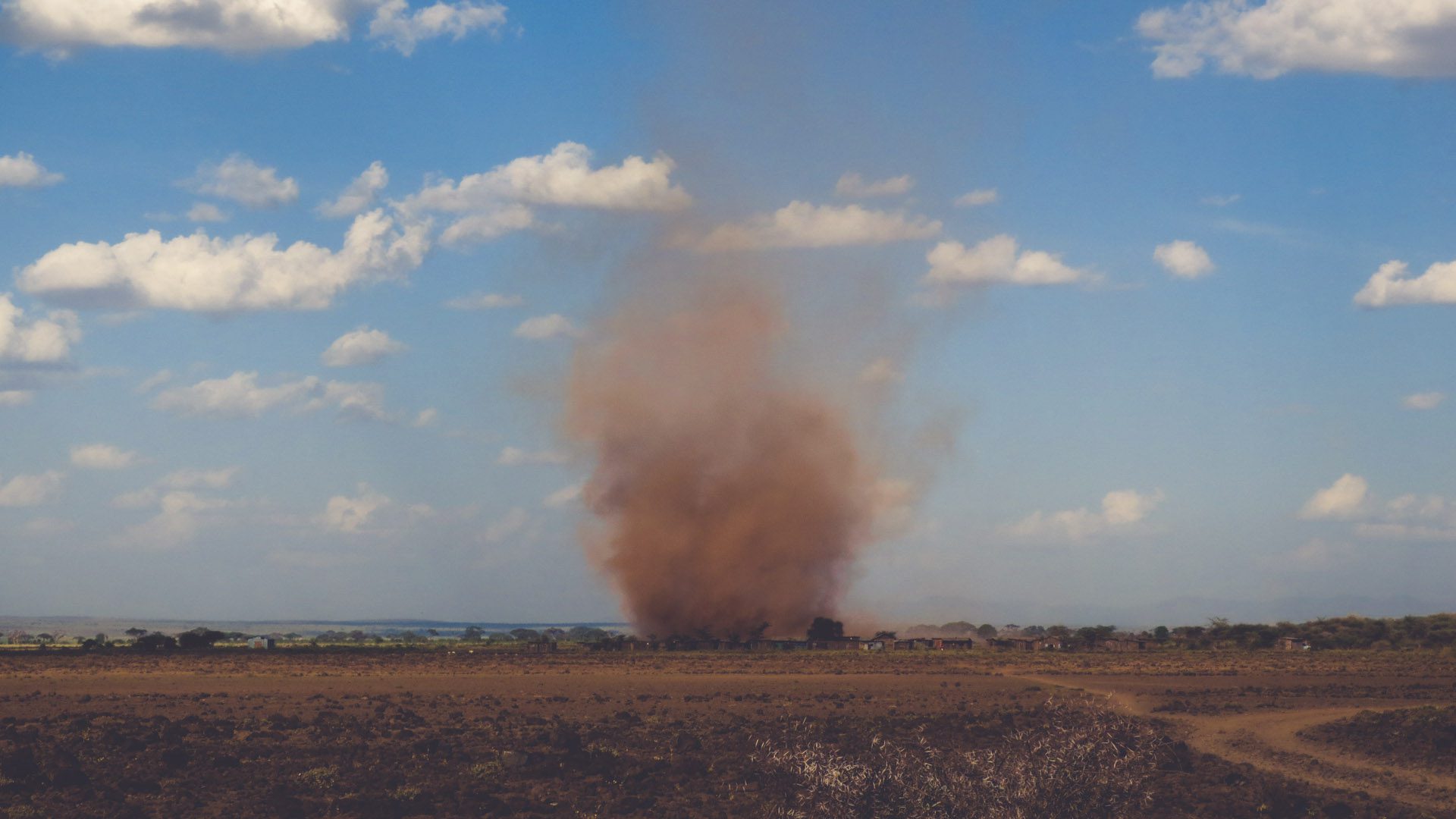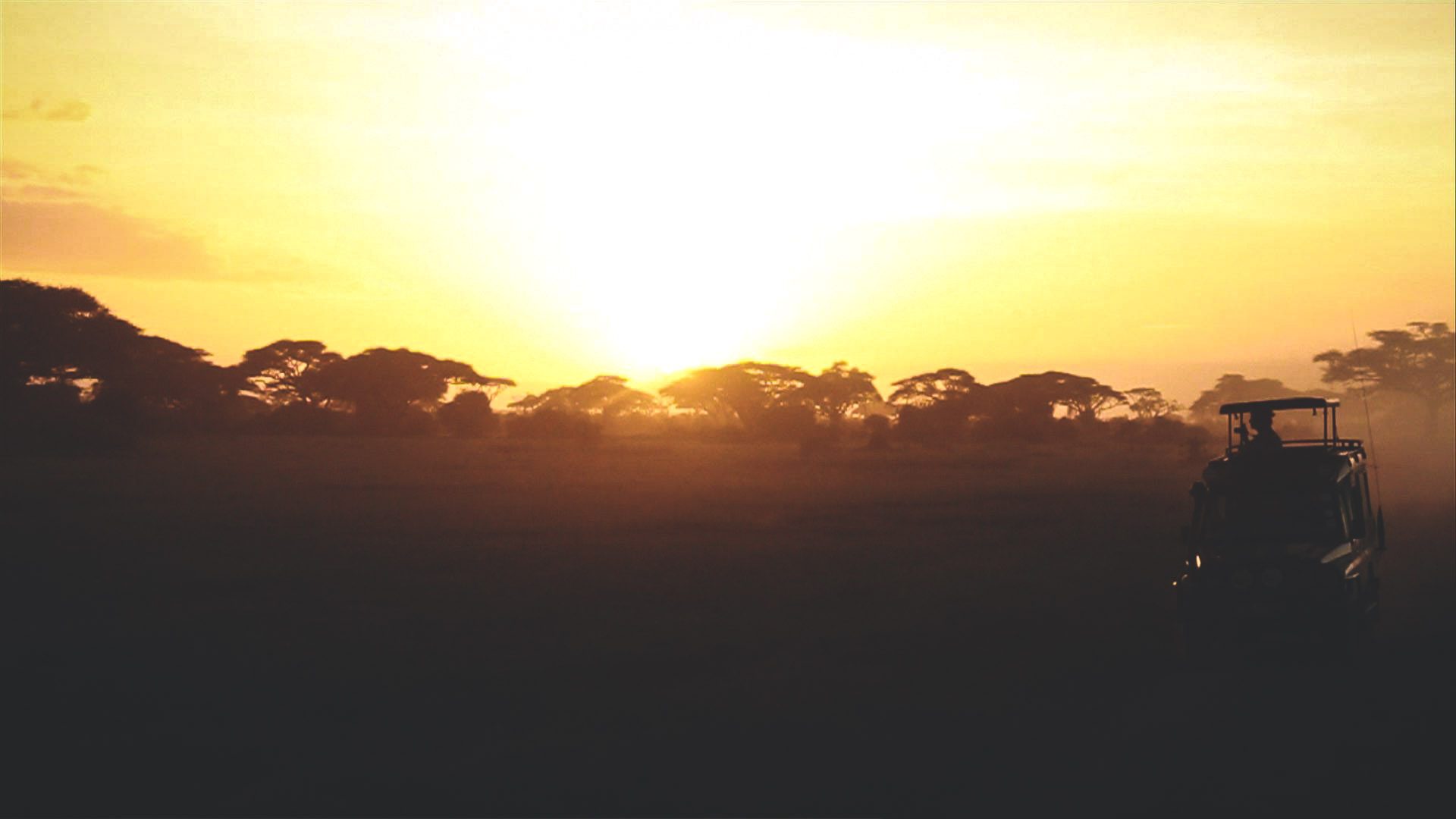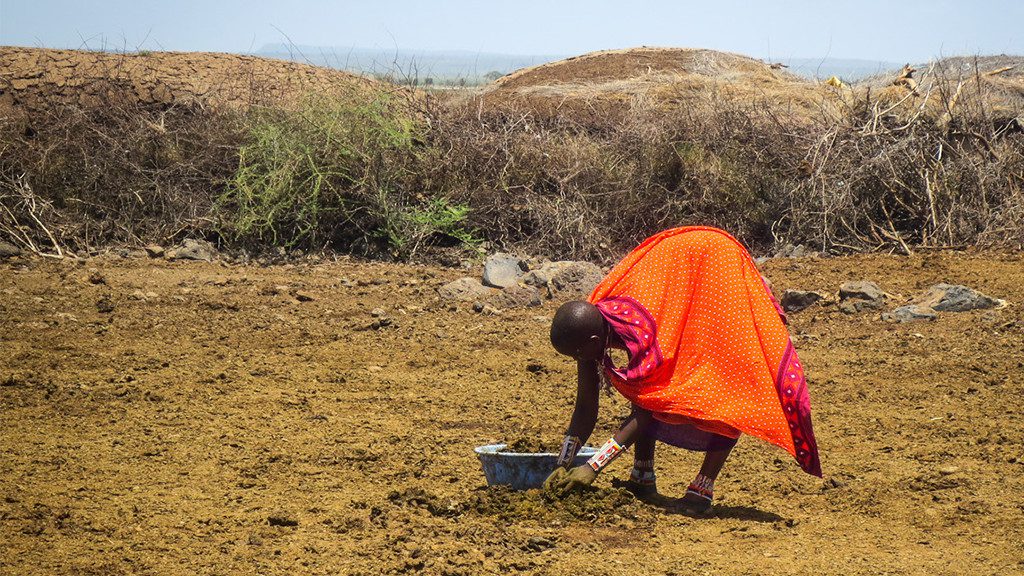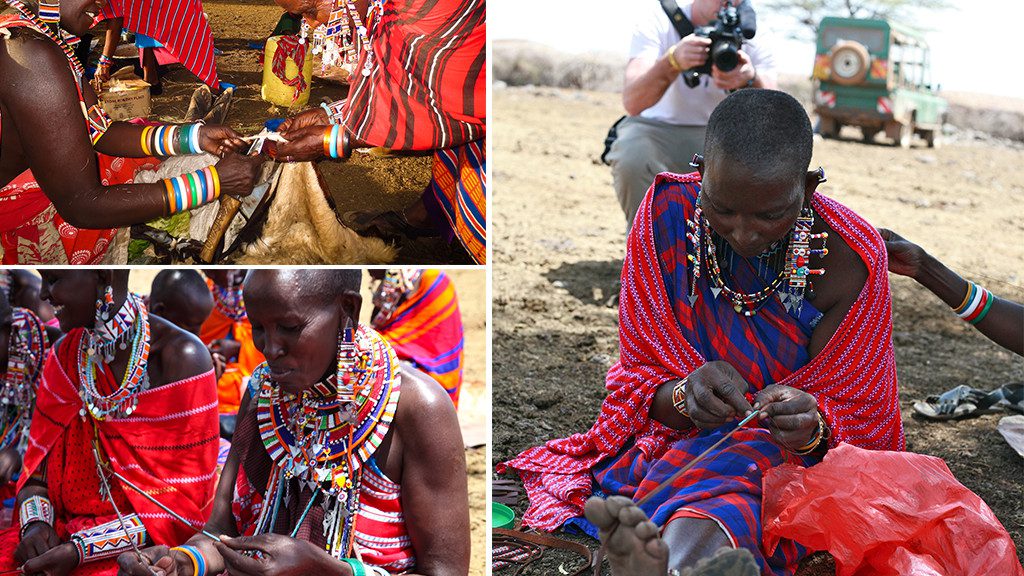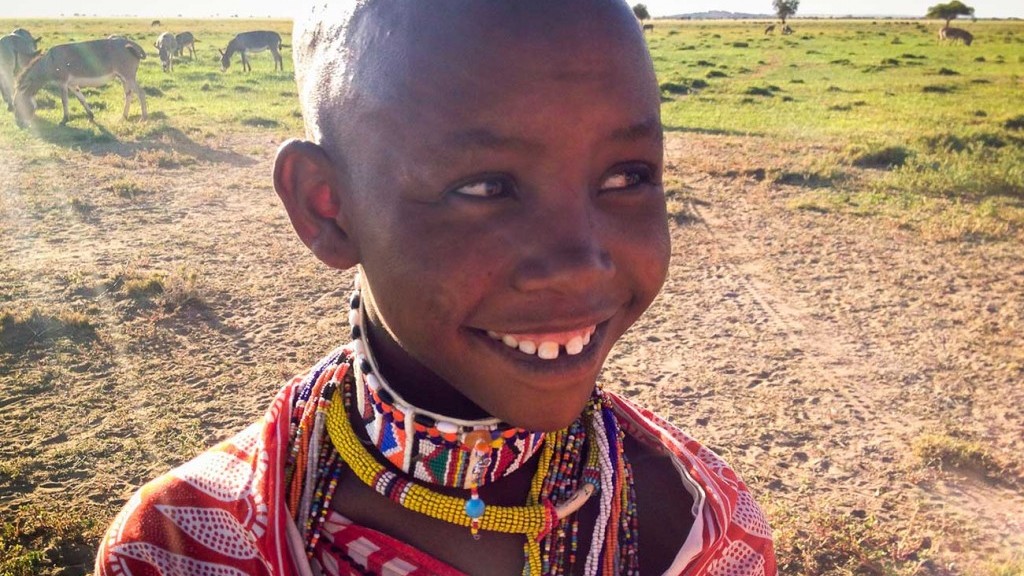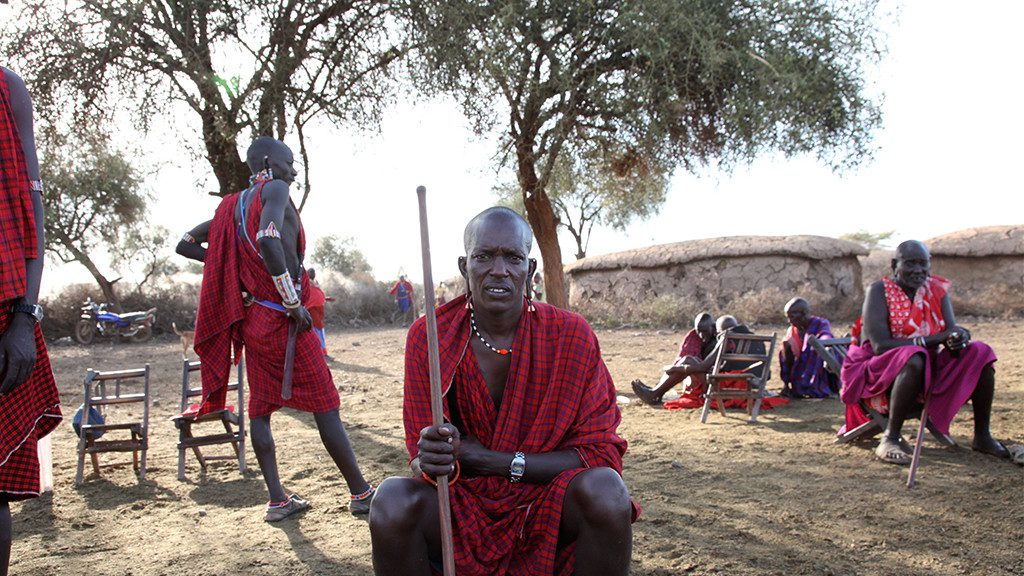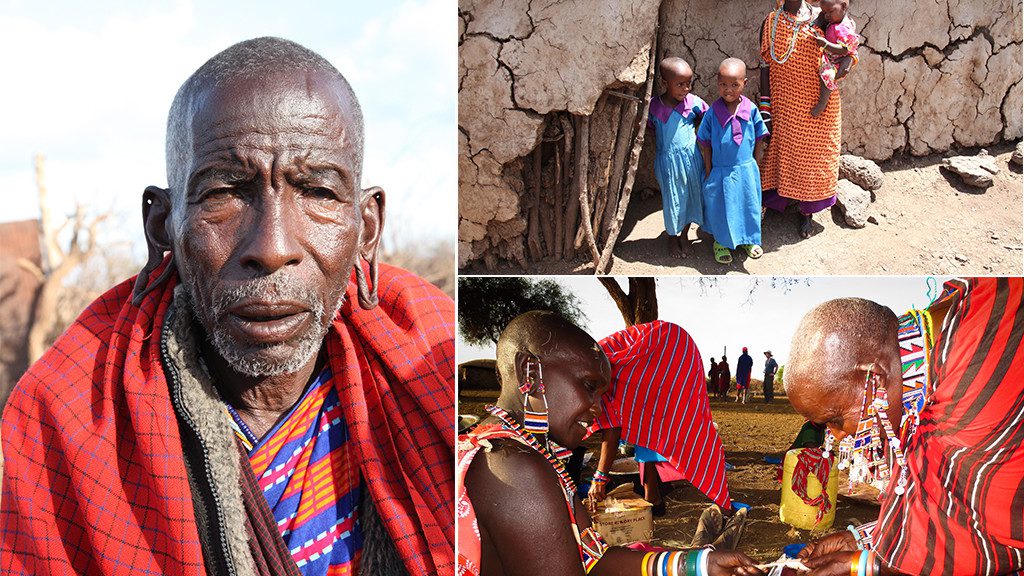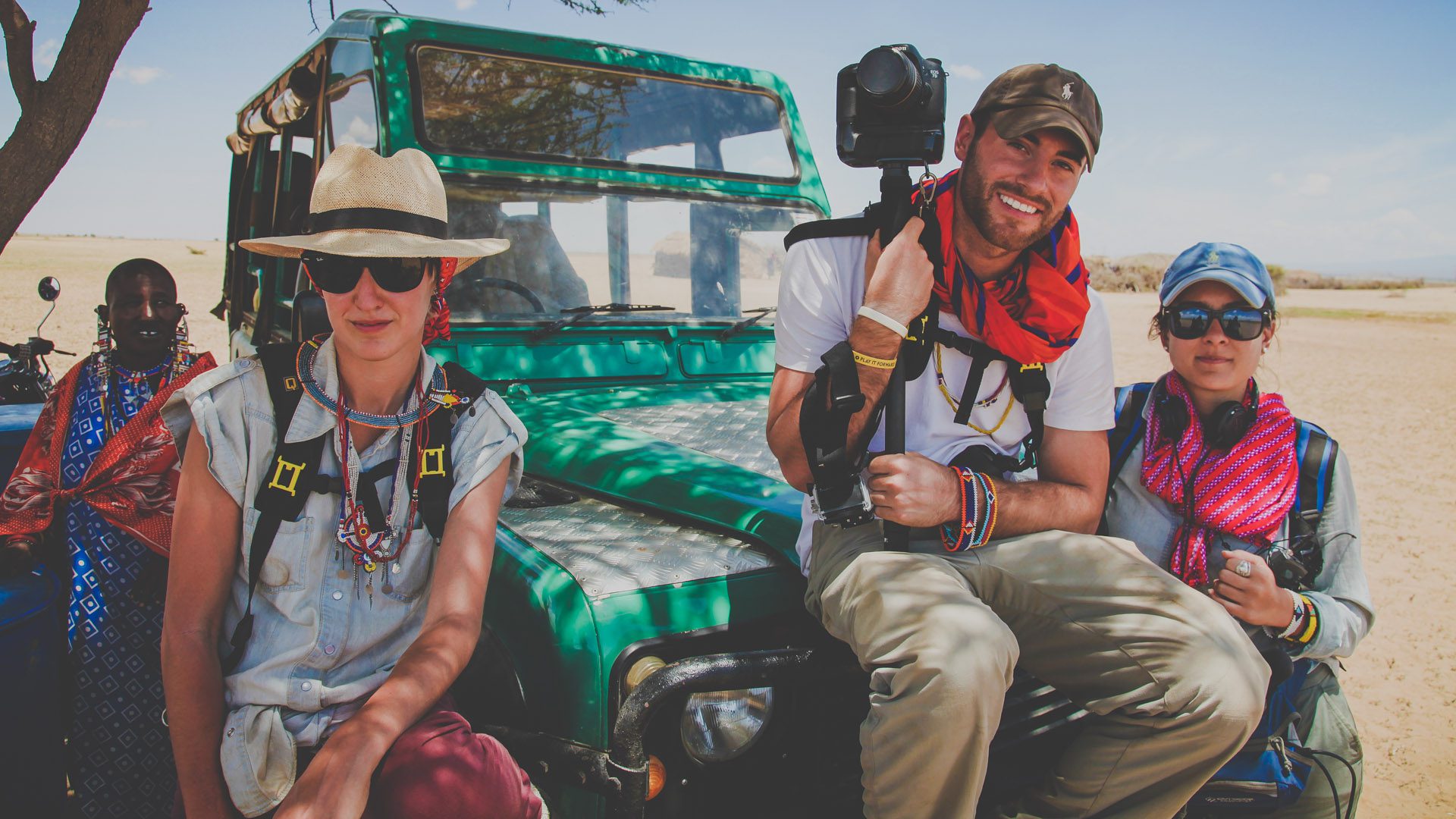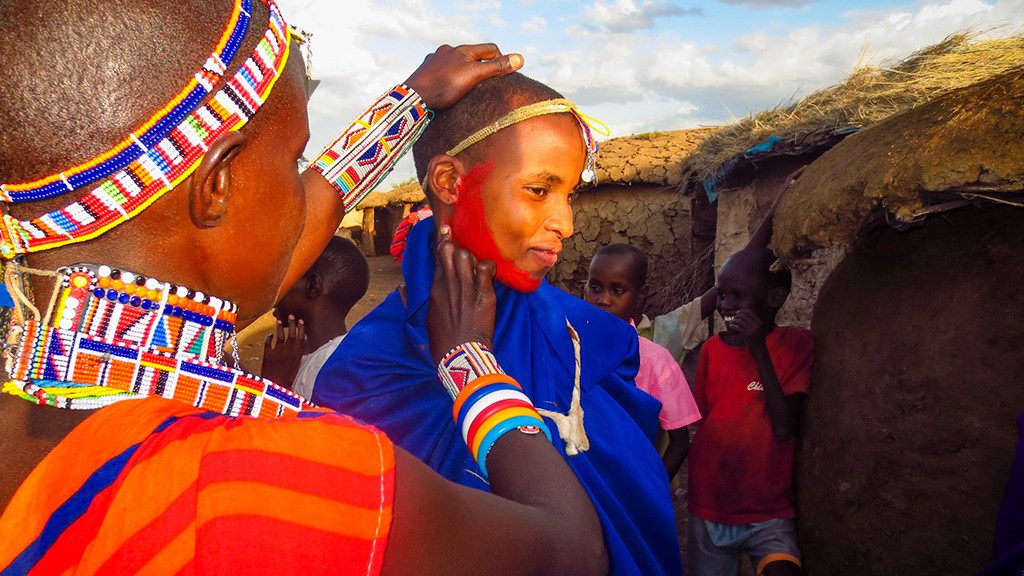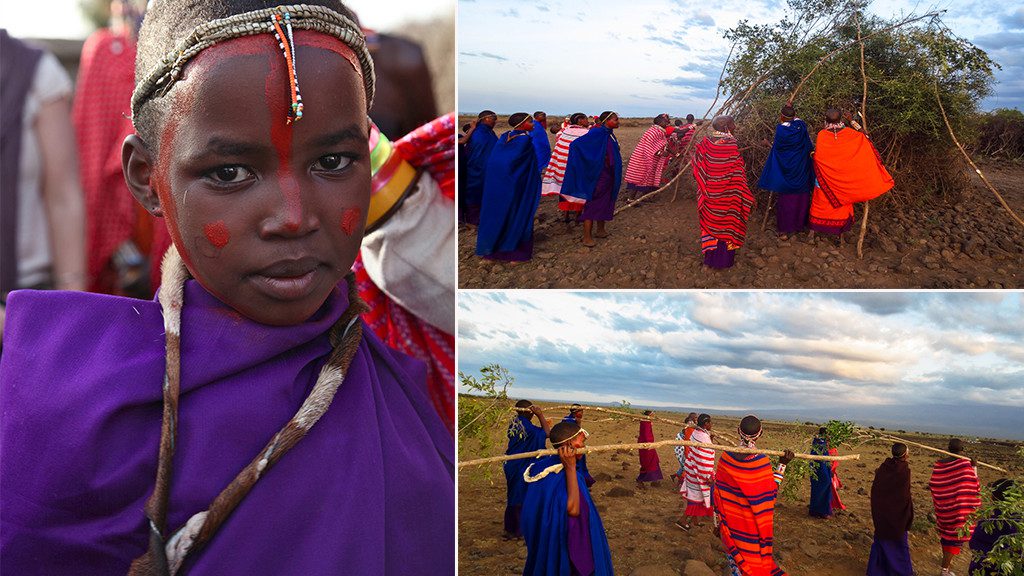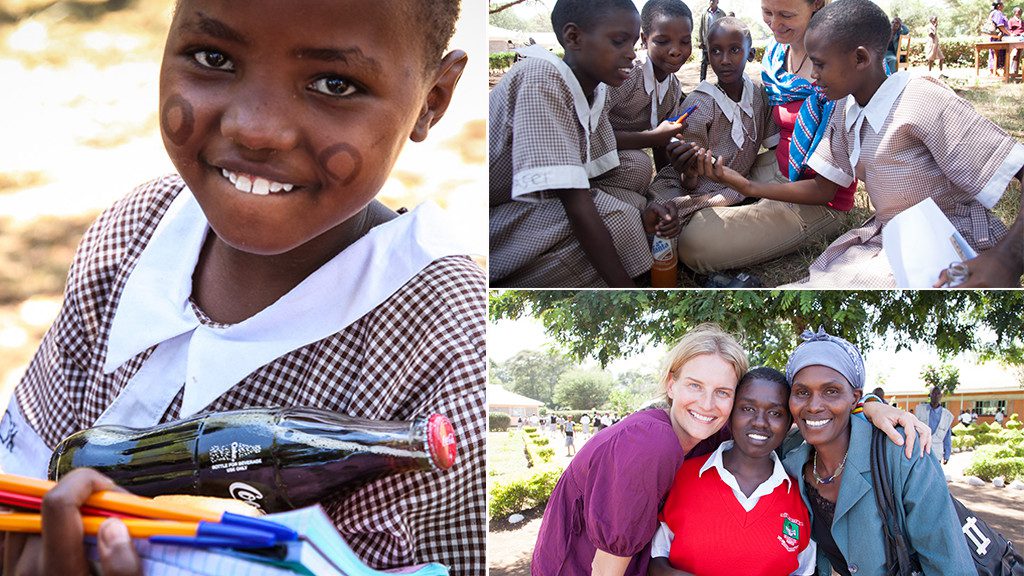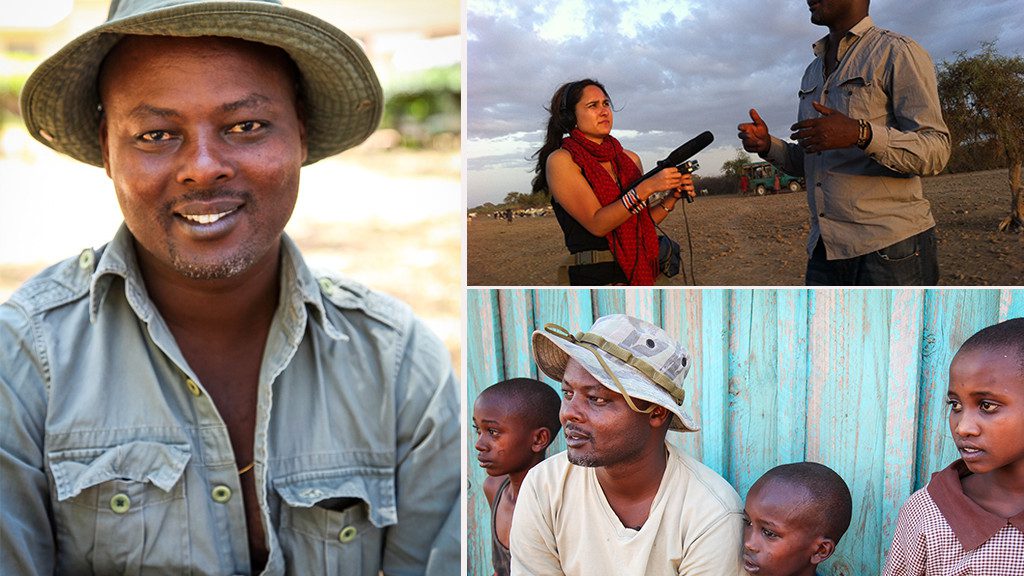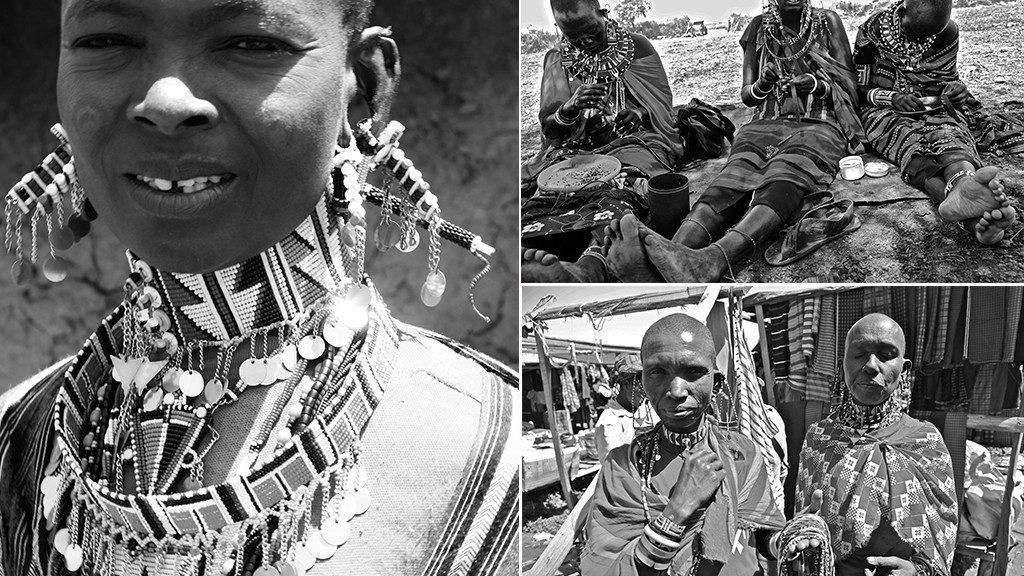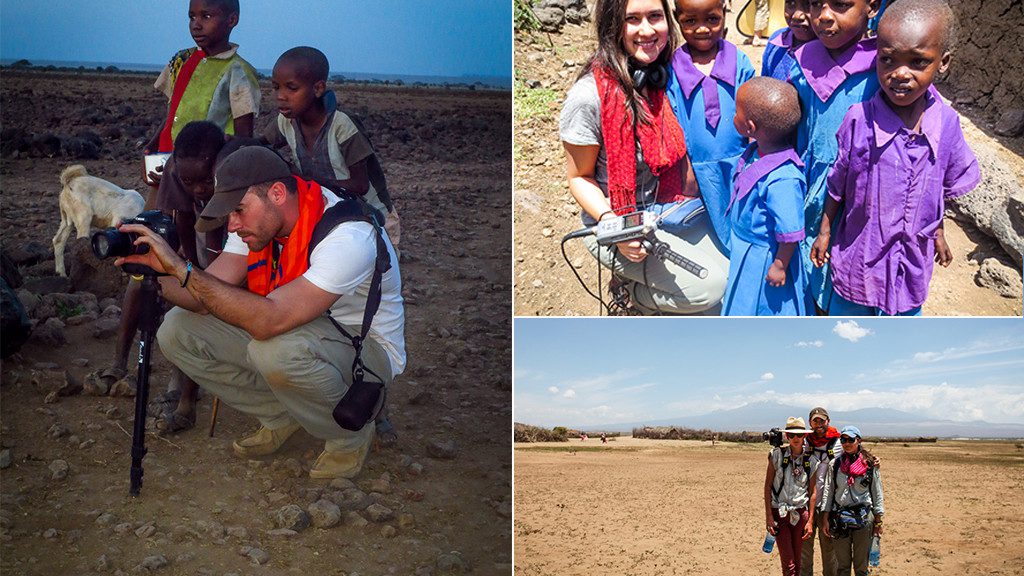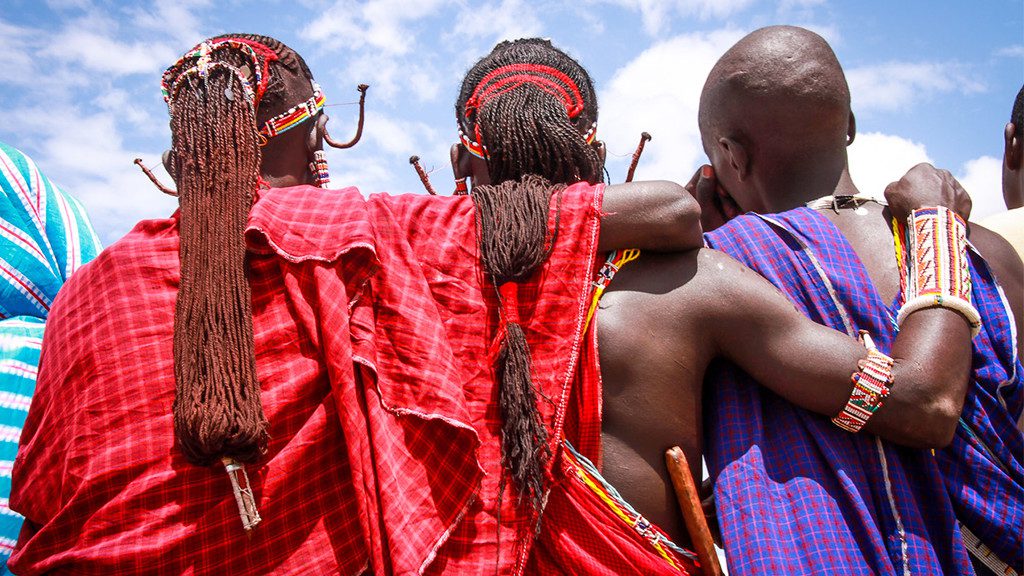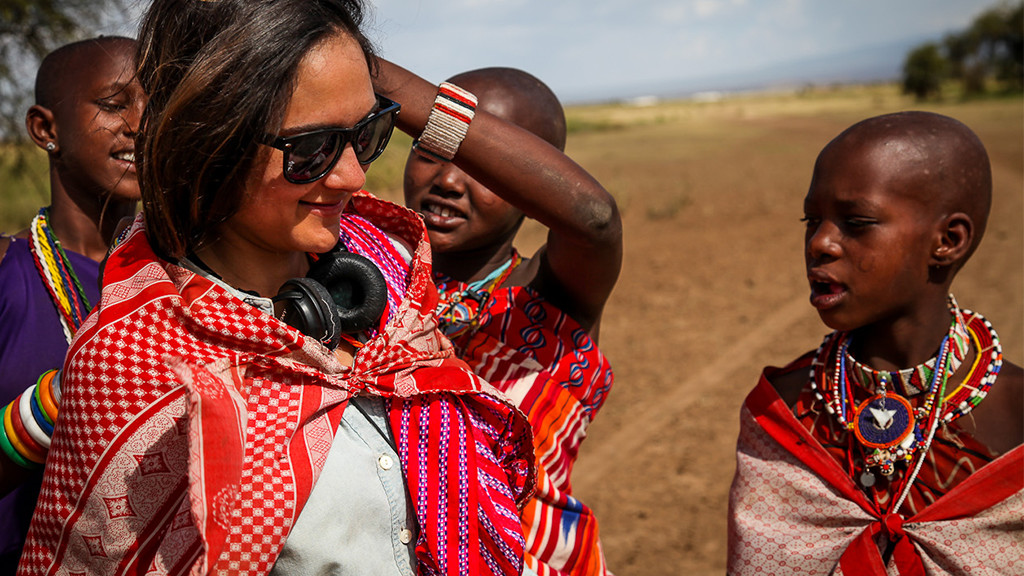Field Journal: For Aaron The Documentary
For Aaron: The Documentary
Notes From The Road
For Aaron: the Documentary is the award winning film that launched our Projects That Matter Initiative. In 2009 we followed a group of friends on the adventure of a lifetime as they traveled across 17 states, 6000 miles, and two support vehicles over the course of 65 days as they honored their fallen brother.
One of those cyclists was Kylar Krebs. This is his journal from the road.
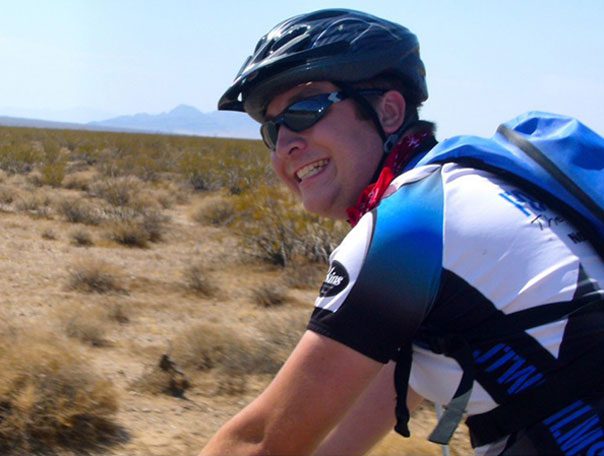
Growing Up
The Family You Choose
When I was 4 years old, I met my very first of the two best friends I would ever have. His name was Aaron, and he lived right across the street from me. Shortly after we would meet Justin. For 18 years, we grew up together, shared our lives together, and became as close as any three people could in this world. We were brothers in all but blood.

On January 18th, 2009, Aaron lost his life in an early morning car crash. When it was finally confirmed, I felt a hurt that I didn’t think was possible to feel. Every memory, from the laughs we shared to the joys we experienced, brought a flood of tears to my eyes. Knowing that I would never look across the street and see him getting out of his car, and never being able to shout his name to him and hear him respond with mine. How could I ever come to grips with losing the person who helped mold a third of the person I had become?
Justin would give me the answer to that question.
I'm In
My Call to Action
The previous summer, Justin and Aaron came up with the idea that the three of us should take a cross-country bicycle trip after we all had graduated college. Unfortunately, Aaron didn’t survive to see the idea to fruition. About a month after we laid Aaron to rest, Justin called me and told me that we should still go on the bike trip, as a way to honor Aaron’s memory.
However, Justin had more ideas than just the two of us riding bicycles across the country. He had decided that we should make a documentary out of the trip, chronicling not only our journey, but also the entire scope Aaron’s and our lives.

I was out in our family garage shortly after Justin had dropped the documentary idea on me, when I unearth my old bicycle. It was the same bicycle that I had rode the night Justin and I ended up being brought home in a cop car. I thought back to that night, and what I had told Justin. I told him sneaking out that late and riding that far just to meet up with a couple of girls was a really bad idea, but he was hell bent on going. When I realized how determined he was, the only thing that I could say to him was “Well, I can’t let you go alone…”
I called Justin, and simply told him “I’m in.”
The Team
August 20th, 2009
We found our crew in a couple of Justin’s friends and classmates from college: Geoff, Justin’s former roommate and friends would be our driver/navigator, and Jon, one of Justin’s film-study classmates, would be our cinematographer. Another one of Justin’s film-study friends, Travis, couldn’t come along on the trip, but offered to be our principle editor for the film. With that, we had our principal crew in place.
On August 20th, 2009, I left my home in rural Central Pennsylvania and drove across the country to Los Angeles. A week after arriving in L.A., I embarked on the return trip home. I experienced nature at its most fierce and witnessed it at its most awe-inspiring moments. I faced the most intense adversities I had ever experienced. Two months after leaving the west coast, I myself back in my hometown in Pennsylvania, and I had completed the entire journey…from the seat of a bicycle.
The day of our departure rolled around quicker than I ever thought it would. We said a tearful goodbye to our families, and on a cloudy morning on August 20th, our journey began.
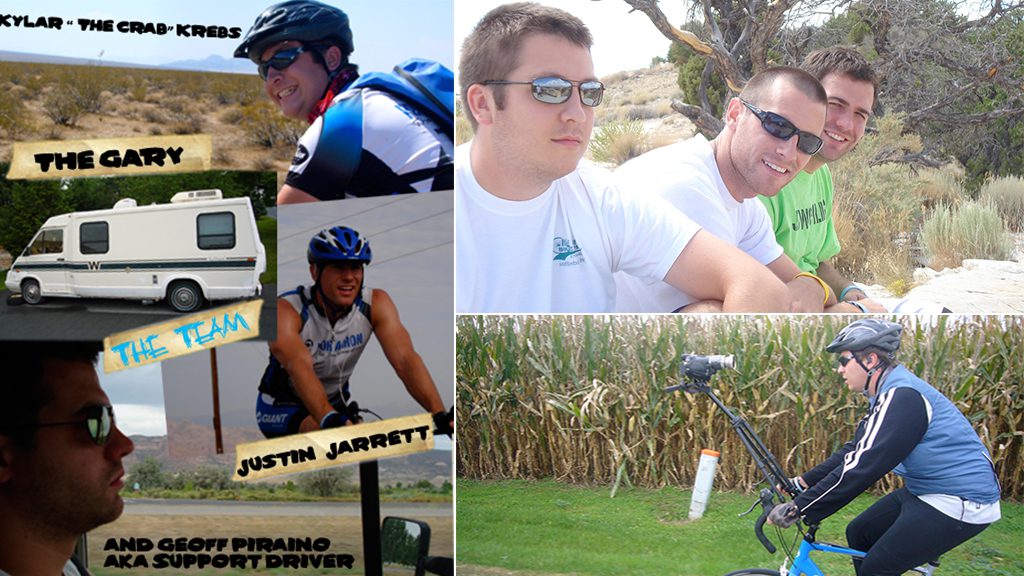
The Mojave Desert
I'll Never Let You Down
Over the next few days we made our way out of the Los Angeles area and into the remote areas of the Mojave Desert. I had thought the hot asphalt and metal buildings of the city would be as tough as it got, and I was so dead wrong it wasn’t funny. Riding around the humid country roads of Central Pennsylvania is one matter; braving the mean city streets of LA in 100-degree dry heat was another. It seemed like the heat was sapping my strength quicker than I had ever anticipated. I was going through water quicker than I should have, and with the temperatures super-heating our drinks in astonishing time, it was almost impossible to get refreshed. I had finally decided to give up, and admit I couldn’t get up this hill, out of this desert, across the country, and finally home. My mind and body had totally failed me, and I needed to flat out quit.
I was going to call Geoff to come pick me up and help me throw in the towel. As I opened the bag, my wallet fell to the ground. As I bent over to pick it up, I saw it had fallen open to a picture of Aaron I had stashed in it on the day we left for the trip. My mind turned to a thought that pained me almost as bad as when I first realized Aaron was gone. The thought that I was letting him down.

Goodbye Gary
Gallup, New Mexico
The trip went on without incident for a while until we reached a small town called Gallup. It was here that our RV, the Gary, decided that it could go no further, and completely broke down.
We informed our parents of what was going on, and they pooled their resources together to come up with a solution.
Justin and my parent’s came up with the idea that we could use Justin’s family’s pop-up camper, and use Justin’s father’s truck to tow it.
We were back on track.
That is, until I crashed my bike. After some half-assed triage on my bloody appendages, we were back on the road. Over the next few days we covered some good distance. We rode across the Oklahoma panhandle into Kansas.
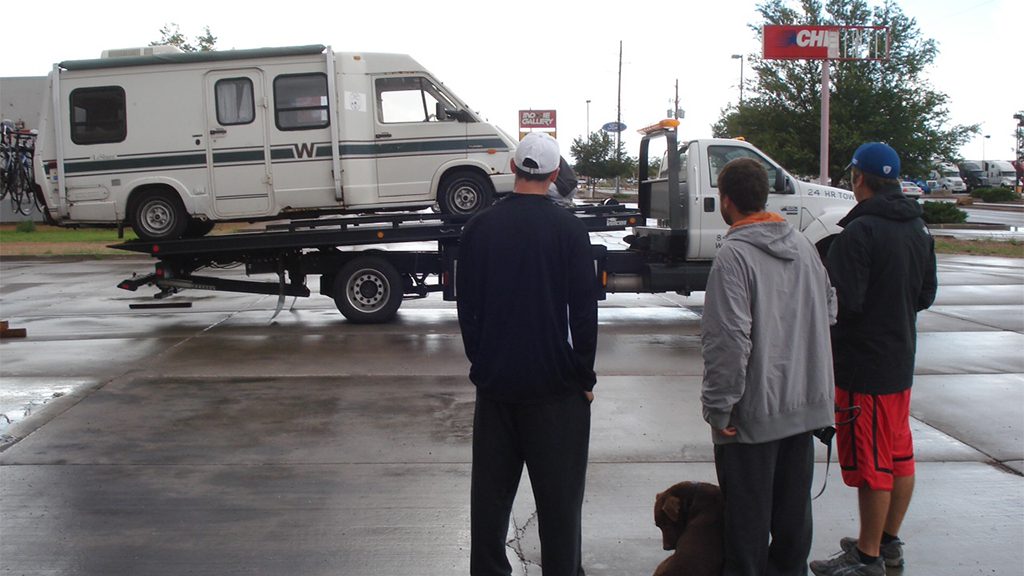
1 Day, 100 Miles
Kansas
About halfway through the state Justin suggested we challenge ourselves to ride 100 miles in one day. At his point my body was starting get into cycling-shape. I told Justin lets try it, and the following day we went for it. Just as the sun was starting to set, Justin took us into a stone pull off. As I pulled off, he unclipped his pedometer from his bike and tossed it to me. I looked at it, and saw the big 1 followed by two zero’s, and couldn’t believe it.


“YOU CAN'T UNDERSTAND BEAUTIFUL UNTIL YOU KNOW WHAT I HAVE SEEN.”
For Aaron
Endless Rain
St. Louis
We reached St. Louis a couple days later, and camped out in an RV park. That night it began to rain. And it rained. And it kept raining.
While we sat there idle for those rainy days, I had a lot of time to contemplate. I realized how grateful I was that I didn’t have the same worries as other people normally do at this stage in their lives. For me there was only the road, the crew, and our destination.
After three days we decided that we couldn’t waste any more time regardless of the rain. We packed up, bundled up, and hit the road through some of the coldest slop I’ve ever endured. The rain seriously slowed our progress, and we could only put in about half as many miles as before. We traversed across Illinois easily enough, and made our way into Indiana.
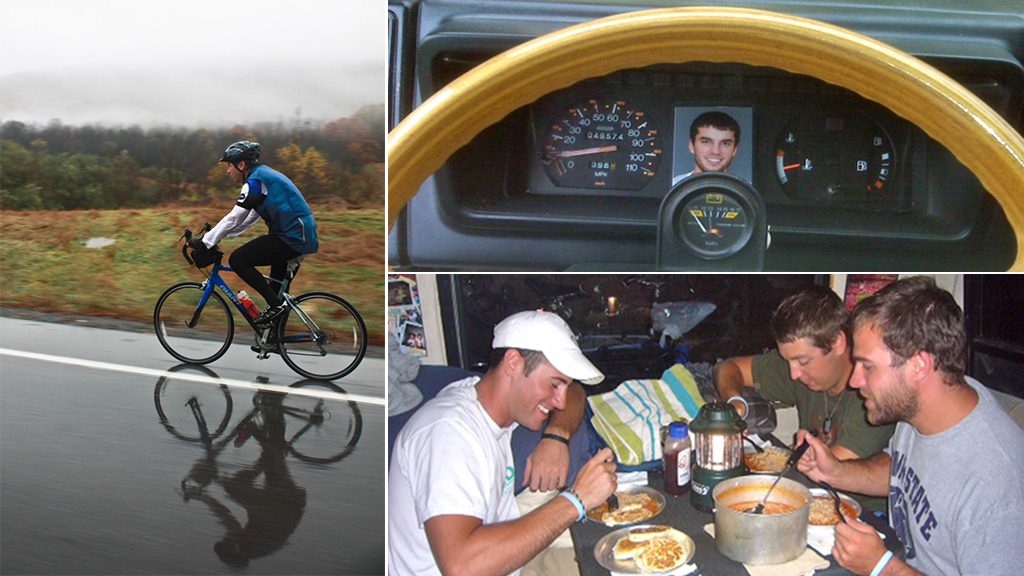
People Along The Way
Ithaca, Ohio
We left Indy behind and started putting fewer and fewer miles between our destination and us. The rain was becoming a big downer, however and our moods were turning sour. We were starting to run low on money, and to say that cabin fever was getting to us was an understatement. We had arranged to meet with a newspaper reporter in the small town of Ithaca, Ohio. After talking to the reporter, we decided to chill out there for the night, and started looking for a place to stay. We made our way to a local bed and breakfast, and we told our story to the woman who answered the door. She sympathized with our cause, and took us in for the night, on the house.
Road Sign Salvation
60 Miles To Go
We had gotten the idea that we would like to share the experience of riding for the documentary with our friends and family, and came up with the concept of inviting everybody who was able to join us on the final 60 miles of the trip. In the pouring rain, we met the first group of our friends in the parking lot of a local restaurant. Our friends celebrated around us, and after a moving prayer from Aaron’s father, we set out for our hometown. For me, this final ride was some of the most fun that I had on the trip. Sharing with our friends and family the experience of riding for all those miles brought me an amazing sense of joy.
We picked up a second group of our friends at the halfway point, continued on. We eventually rode into the parking lot of our high school, where the ending of our trip and documentary was to culminate. We rode in to a huge surprise, as a huge crowd of family, friends, and supporters were gathered to welcome us and celebrate our arrival. The high school marching band was even there to play us in as we rode to the celebration.
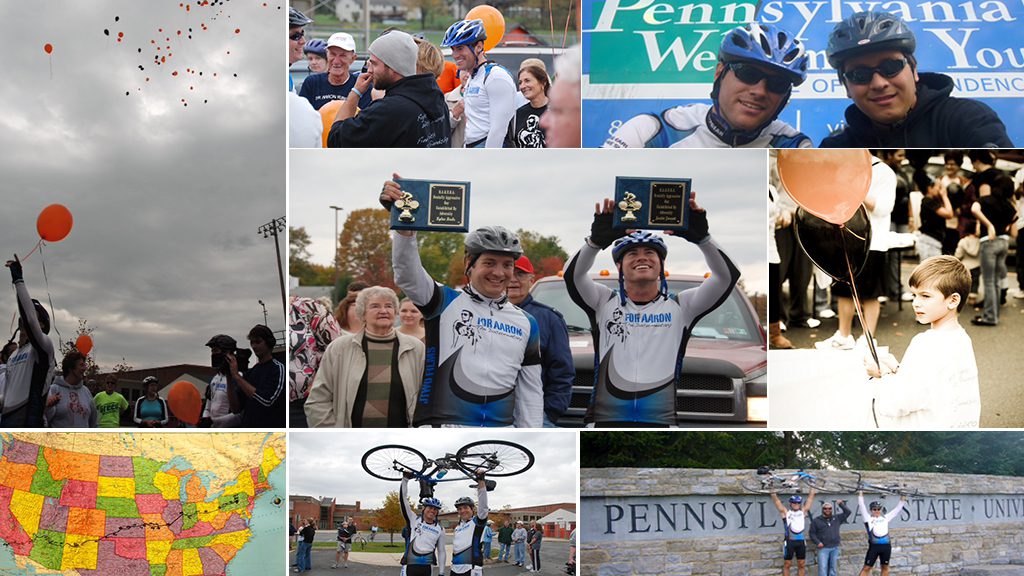
For Aaron
3000 Miles
As I rode for those last few moments before the crowd swarmed me, my thoughts turned to Aaron. Silently, I thanked him for helping me to get over those hills, and watching over me and keeping me safe as I journeyed over this amazing country. I hugged The Klingers’, who had gave to the world one of the most amazing friends you could ever find, and for everything they had done for us. I went and hugged Geoff and Jon, and thanked them for sacrificing their time and giving of themselves to help make the journey possible. Lastly, with tears starting to well in my eyes, I went up to Justin, and gave him the strongest hug of the day.
We had fulfilled our promise to the friend we had lost, and together we had completed the greatest adventure of our lives. There was and is no one else who could have ever pushed me to help me undertake and complete the journey. There is no one out there who I could ever have seen myself doing the trip with. We are and always will be brothers.
And so, our amazing journey had ended. We had traveled over 3000 miles by bicycle, and over 6000 miles overall. We conquered the heat of the Mojave Desert, defeated the winds of the Great Plains, and faced down the cold autumn rains of the East. We discovered the depths of our resolve, and surpassed them. We sweat, bled, ached, shivered, raged and cried. And we did it all…For Aaron.
The Premiere
One year after the day we left to bike across America, we premiered the film in front of our hometown, Milton, Pennsylvania. We knew we were going on a film festival run and in the world of festivals the premiere is coveted. However, we didn’t care – we knew there was only one place, in one town, amongst our friends that helped to make all of this possible that truly deserved that premiere.
On August 21 – For Aaron: The Documentary officially debuted for the world to see.
The Result
Around The Country & Back Again
One year after the day we left to bike across America, we premiered the film in front of our hometown, Milton, Pennsylvania. We knew we were going on a film festival run and in the world of festivals the premiere is coveted. However, we didn’t care – we knew there was only one place, in one town, amongst our friends that helped to make all of this possible that truly deserved that premiere.
On August 21 – For Aaron: The Documentary officially debuted for the world to see.
This project was made possible through our Projects That Matter Initiative. The Projects That Matter Initiative is a Philadelphia based video production program with the mission of providing professional digital media services to Non-Profits at a discounted rate. To learn more about how your organization can join the initiative and qualify for creative content production discounts click below.
Field Journal: India
Project India
Field Notes From DIRECTOR JUSTIN JARRETT
As part of our partnership with Cora, our creative director Justin Jarrett had the pleasure of traveling to India to capture footage for Cora’s Brand film.
Filming took place over two weeks in early March in several cities including, Kolkata, Delhi and Uttar Pradesh. The following are excerpts from his travels.
Joyride
22.6547° N, 88.4467° E
It’s late. I feel like I have been in the Bermuda triangle of traveling for the past 24 hours. Unable to sleep, I watched six movies on the plane — back to back to back to back and so on. I think I’m in India, or is this 1950 England? I can’t tell— the yellow cabs are the same. The travel fog coupled with the jet lag and the fact that we are currently doing 80mph down a highway with no lanes or turn signals and what seems to be a honk twice and get out of the way or I am going to run you over Road Rash style mentality is the only thing keeping me from passing out face down on the pavement.
The tranquil peace exuberating postcards lied. India is anything but quiet. Riding in cabs in India makes riding in New York City cabs look like a Sunday joyride in a horse drawn trolley. We are less than 8 minutes deep into our journey halfway around the world and I can already tell you that if I make it back to the states alive, I will have a new appreciation for Grandma’s sub 45 mph driving technique. All I can think about is how much this surreal moment feels like a music video for Rob Zombie’s “Superbeast”. Good thing I love roller coasters….here we go.
Kalkuta, India
HALF A WORLD AWAY
It’s 1:42pm in the afternoon here. I couldn’t even tell you what day of the week it is if you asked. Im sitting outside – just listening.
The sounds here are incredible. I know that may sound strange…but unless you have heard them with your own two ears you wouldn’t understand – as my traveling companion so eloquently put it, “There is chaos and tranquility side by side. Everything is right up against everything else, and all lines begin to blur. It’s a frenetic collage of energies.” There are kids laughing, motors and horns screaming, and fruit and spice vendors calling out in hopes of their next customer. This is the hustle and bustle of a modern day New York City, but it’s not New York City at all – It is Kolkata – the capital city of West Bengal, India.
I am a long way from home. I am currently here on assignment for PTM with the Founder of Cora Women, Molly Hayward. Our mission here is to capture footage and interviews to be used in a company launch project as well an overall larger project that I have been working on for more than two years about women’s rights and education around the world.
Urmi Basu
The Interview
I’m staring down a hallway. To my right beautiful chalk paintings, most likely drawn by children. To my left, a multitude of rooms. Wooden beds take up the majority of the space. The floors are dirt and littered with piles of old food and trash being picked at by dogs and goats finding shelter in the shade from the blazing sun. Women wash cook wear and men sit on small wooden stools along the wall.
The women smile and laugh as I pass through. The men have looks that could pierce steel. I am walking through a brothel in Kolkata.
I am on my way to film one of the most important interviews of my life. To put this in context, I have directed Shaquille O’Neal in commercials, played golf with Super Bowl champions and shared a bottle of Patron with Steve Urkel…yes the real Steve Urkel. I have never been star struck before. Yet, I find myself in complete and utter silence as I sit across the table listening to what could only be described as one of the most brutally honest conversations I have ever experienced.
I am sitting across from renowned activist, Urmi Basu at her New Light, headquarters located above one of the most active brothels in Kolkata. She is friends with Oliver Stone and M. Night Shyamalan. She is known worldwide from her appearance in the PBS documentary, Half the Sky. She talks of the realities of modern day India and of the hardships women must face. I can hear it in her voice – she has a mother’s love for every single one of the girls she watches over. I’ve never seen such an endearing and optimistic spirit in anyone like this before.
New Light
And New Friends
The more I travel the world, the more I see. The more people I come to know and call my friends, the more I believe that we as humans are innately drawn to one another.
Our pasts, our present and even our futures are so bound and intertwined that we cannot see where one stops and the other ends.
Today I find myself at one of Urmi’s New Light Schools. These young girls come from all walks of life with backstories that read like a Hollywood screenplay. The majority are at risk for sex trafficking and removed from their homes at an early age to get an education. They have agreed to spend the day with us.
As the day begins and these girls begin to open their lives to us little by little I begin to see a pattern. The backstory doesn’t matter – those have come and gone now. What matters are the smart, beautiful young women sitting in front of me right now. They are unbelievably poised and well spoken as they tell me of their dreams to be doctors, actresses, and singers when they grow up. A few girls tell us they want to be dancers and volunteer to dance for us.
One thing is certain – these girls have a bright future – and for the first time I understand why Urmi called her organization New Light.
Pardada Pardadi
26.8500° N, 80.9100° E
Five hour plane ride….check. Four hour car ride…….check. One bout of food poisoning for my colleague and traveling companion….check. Having gotten a bad case of Ecoli during my travels to Kenya— I understand her pain. Sometimes our stomachs don’t have the same sense of adventure as the rest of our body.
We have just arrived in Uttar Pradesh at Pardada Pardadi . We are here to capture more footage. With my partner bedridden for the next two days it is my job to finish the story.
I began exploring the school and found a group of girls playing futbol outside on a dirt field. They invited me to play and I gave them a GoPro camera so that they could capture the action. This is something that has become somewhat of a tradition for me. Every time I travel around the world and meet children I always give them the GoPro and let them takeover. I love seeing what they do and the reaction on their faces.
We have been welcomed with open arms here. The school’s founder, known as Sam to most – a former Dupont executive from India who has chosen this location to “retire” offers his words of wisdom that can only be summed up with a story from Sam himself.
“if you know your mission is to get to the moon, but you need a crew to get there and your crew wants to go to the beach, what do you do? You make sure the mission to the moon stops by a beach on the way there.”
Sam is referencing his village toilet project. He commissioned the build of a toilet and bath house in a village. Only to have the villagers move their cows into the covered bathhouse while the villagers continued to use the neighboring fields.
He quickly realized that money doesn’t solve issues – education does. To which he responded, ‘to change a village one must first change the minds.”
Tranquil Chaos
Last Day in India
The sun is going down. The day is fading fast. The streets are more alive than ever. My time in India has come to an end.
Describing this place to my friends back home will prove to be a challenge. The contrasts are drastic – beautiful yet harsh. Loving yet cruel. Peaceful yet chaotic. It’s the charm of this place that draws you in but always manages to keep you at an arm’s length so that you don’t get too comfortable.
I have met some of the kindest most gentle souls I will ever come across. Yet it is not lost on me how difficult their lives have been. Most welcome you with open arms and a smile, but in their eyes — a pain I will never understand. The Indian Caste System, created as a means of control, is archaic in nature and hovers over this place like a storm cloud waiting to erupt. I feel for my new friends. However, I am also taken back by how strong and unbelievably happy they seem even in the face of despair. I will miss my friends.
This place, this land seems torn from a history book – out of place in this new world, yet it couldn’t feel anymore alive than it does right now. It seems this place grows as fast as it decays, a never ending paradox of tranquil chaos.
As I board my plane I look out at the blazing orange sky. This is not my last Indian sunset.
The Result
Cora Women
This project was made possible through our Projects That Matter Initiative. The Projects That Matter Initiative is a Philadelphia based video production program with the mission of providing professional digital media services to Non-Profits at a discounted rate. To learn more about how your organization can join the initiative and qualify for creative content production discounts click below.
Field Journal: Kenya
Project Kenya
Field Notes From Our Journey To Kenya
We had the honor of joining U.S. based non-profit, A Voice is Heard, on their journey to Kenya to capture footage of their mission. Filming took place over 17 days in Kenya’s Amboseli region in the shadows of Mount Kilimanjaro The following are thoughts and journals from our travels.
The Mission
Director Justin Jarrett
As a documentary filmmaker, it’s rare to travel without a plan. Usually, we go through our scripts and our outlines with a fine tooth comb narrowing down every last detail. We map out our locations and engage ourselves in the research ritual where we lock ourselves away and read books and live on wikipedia for weeks on end in preparation for the shoot ahead. I know in our heart of hearts we want to be prepared, but we are also losing something….something sacred to every true filmmaker —the art of discovery. There’s something sacred that every artist engages in when he or she ventures into the unknown with nothing more than a camera and a taste for discovering the real story. It’s raw and emotional meeting someone for the first time and earning their trust in that very moment.
This would be our challenge as we touch down in Kenya.
On one hand,we have a mission. We were invited to travel alongside our hosts, A Voice is Heard a non-profit organization working in partnership with communities in developing nations. They work to provide life’s basic necessities through sustainable solutions for the provision of food, water, medical care, education, and alternative sources of income. They have been traveling back and forth from the states to this same region for the past 7 years, befriending the Maasai and working side by side with them. We have been tasked with creating a Brand Film for AVIH in order to help show donors first hand how important their ongoing mission is to the Maasai. On the other hand, we were given permission to create our own companion piece of our choosing – a filmmaker’s dream. No creative boundaries….just discovery.
Amboseli
Associate Producer Sonia Bhagat
Amboseli is 4 hours southeast of Nairobi . Historically Maasai land, much of the park harbors a vast array of wildlife, which attracts safari tourists/adventurers alike. The setting of Hemingway’s The Snows of Kilimanjaro, Amboseli lies on the border of Kenya and Tanzania, boasting gorgeous views of wildlife and the famous Mount Kilimanjaro.
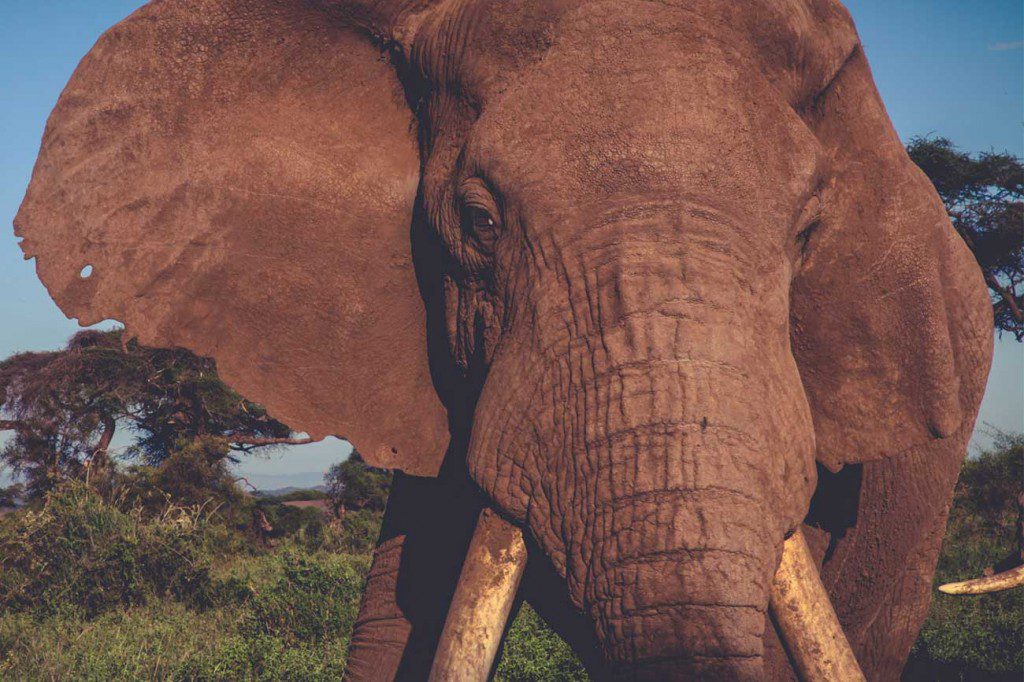

The Maasai, one of the largest tribes in Kenya, are historically nomadic or semi-nomadic. Today, because of the effects of globalization and western aid and development, the tribe has settled in numerous villages where children can attend school and women can focus on beadwork. Beading is one of the main sources of income and often a trademark of the tribe’s culture.
The Maasai
Associate Producer Sonia Bhagat
During our first day in Amboseli, we traveled to Inchurra, a Maasai village 8 miles west where we were introduced to the Amboseli women’s beading group, a collective of women from different Maasai villages that comes together on behalf of A Voice is Heard to make designs created by one of the founders.
It was our first taste of Maasai life. The village was encircled by dried acacia bush creating a secure fence around the bomas (mud huts made from dried cow dung and thatched roofs). Dogs, goats and cows roamed the manyatta and children played near the homes, all coexisting peacefully together.
The woman sat under small trees to escape the heat of the sun, working on their beaded bracelets, hand stitching colorful beads one by one onto leather bands. They spoke amongst themselves while working, seemingly ignoring our photographer and film crew or perhaps commenting on how absurd we looked with our sun burnt skin, sound gear and film equipment. We were the mzungu (the white people) and we were strange but not necessarily unfamiliar.
Tourism Welcome
Associate Producer Sonia Bhagat
The Maasai’s main source of income, after the selling of goats and cattle, is tourism. Trucks of tourists stop at each village, where the Maasai greet them, offer chai and perform a traditional song as a gesture of welcome. Maasai beading is a hot commodity among travelers and brings in a modest but essential income to the villages.
While the women worked, the men sat separately amongst themselves talking and relaxing. Suyianka Ole Noomek, an 82 year old Maasai, sat in a lackadaisical fashion, while describing his role as advisor to the Maasai men and boys. As he snorted snuff (powdered tobacco) into his nostrils, he explained that he had three wives and 30 children. His most recent marriage occurred at the age 57 and his bride was a mere 13 years old. Girls are commonly betrothed at a very young age often, in exchange for livestock.
The Currency of Life
Associate Producer Sonia Bhagat
The Maasai’s main source of income, after the selling of goats and cattle, is tourism. Trucks of tourists stop at each village, where the Maasai greet them, offer chai and perform a traditional song as a gesture of welcome. Maasai beading is a hot commodity among travelers and brings in a modest but essential income to the villages.
Livestock (goats and cattle) are the main source of income for the Maasai. They are used for their milk, dung and on special occasions, their meat and blood. Nothing is wasted and during a ceremonial slaughter, even the head will be boiled down for a soup.
In 2009 a severe drought wiped out most of the animals, leaving the Maasai in a dire state of poverty. Because the tribe relies solely on the animals for their livelihood, the effects were devastating. Without the animals, the tribe had no milk for their children, which resulted in many cases of malnutrition. With no animals to sell, there was no money to be made. Many Maasai went to the surrounding safari camps to find work where they make less than two dollars a day. Tourism became even more essential to survival and remains today an important part of financial stability within the community.
After the drought, the Maasai were able to slowly rebuild their livestock with the help of non-profits like a AVIH working with the community.
Patrick Papatiti
Carmen Myers AVIH Founder
Patrick Papatiti is a true leader of his people, young and old. His voice has resonated throughout the land, garnering a much need shift in perspectives on girls rights, importance of education, land management and traditional culture. He understands the need to preserve the history of the Maasai yet sees a vision of moving forward with the steady change of the world. A Voice Is Heard is extremely proud, honored and thankful to have his guidance, immense knowledge and steadfast heart for his people shape our work. As our Kenyan Director and Chief of his age sect, Patrick Papatiti is selflessly offering support for his people and leading them into an improved way of life. Generations to come will benefit from his unrivaled leadership.
Education
Carmen Myers AVIH Founder
Seeing the confidence wash over the face of a girl, a girl who had been quiet and marginalized in her own community; we knew education began to change her.
Community members came from a far to celebrate our first “Non – Cutting Ceremony.” The symbolic “Coming of Age” is a milestone in the life of a girl. Our girls were draped in black cloth, mothers by their side, sharing a Maasai ritual practiced for generations. One difference separated our girls, they were there to speak out, celebrate becoming a woman without “Female Genital Mutilation.”
In each word spoken, we heard confidence radiating from her as she shared a powerful message to her people: a message of hope, telling a story of change on the horizon. And in that moment, hearing her voice speaking out for all girls, we knew she had become empowered.
Education really does change everything!
This project was made possible through our Projects That Matter Initiative. The Projects That Matter Initiative is a Philadelphia based video production program with the mission of providing professional digital media services to Non-Profits at a discounted rate. To learn more about how your organization can join the initiative and qualify for creative content production discounts click below.

